Kubernetes(v1.21)上安装 KubeSphere(v3.2.1)
- 可以使用各种公有云进行按量付费实验。
- 本次搭建的是单 master 的集群,不适合用于生产环境。
- 所有节点的机器需要联网。
第一章:主机规划
| 角色 | IP地址 | hostname | 操作系统 | 配置 | 设备 |
|---|---|---|---|---|---|
| Master | 192.168.65.100 | k8s-master | CentOS 7.9,基础设施服务器 | 4核CPU,8G内存,40G硬盘 | |
| Node1 | 192.168.65.101 | k8s-node1 | CentOS 7.9,基础设施服务器 | 8核CPU,16G内存,40G硬盘 | /dev/sdb 100G |
| Node2 | 192.168.65.102 | k8s-node2 | CentOS 7.9,基础设施服务器 | 8核CPU,16G内存,40G硬盘 | /dev/sdb 100G |
| Node3 | 192.168.65.103 | k8s-node3 | CentOS 7.9,基础设施服务器 | 8核CPU,16G内存,40G硬盘 | /dev/sdb 100G |
第二章:安装 Kubernetes
2.1 Kubernetes 和 Docker 的版本对应关系
- 官网。
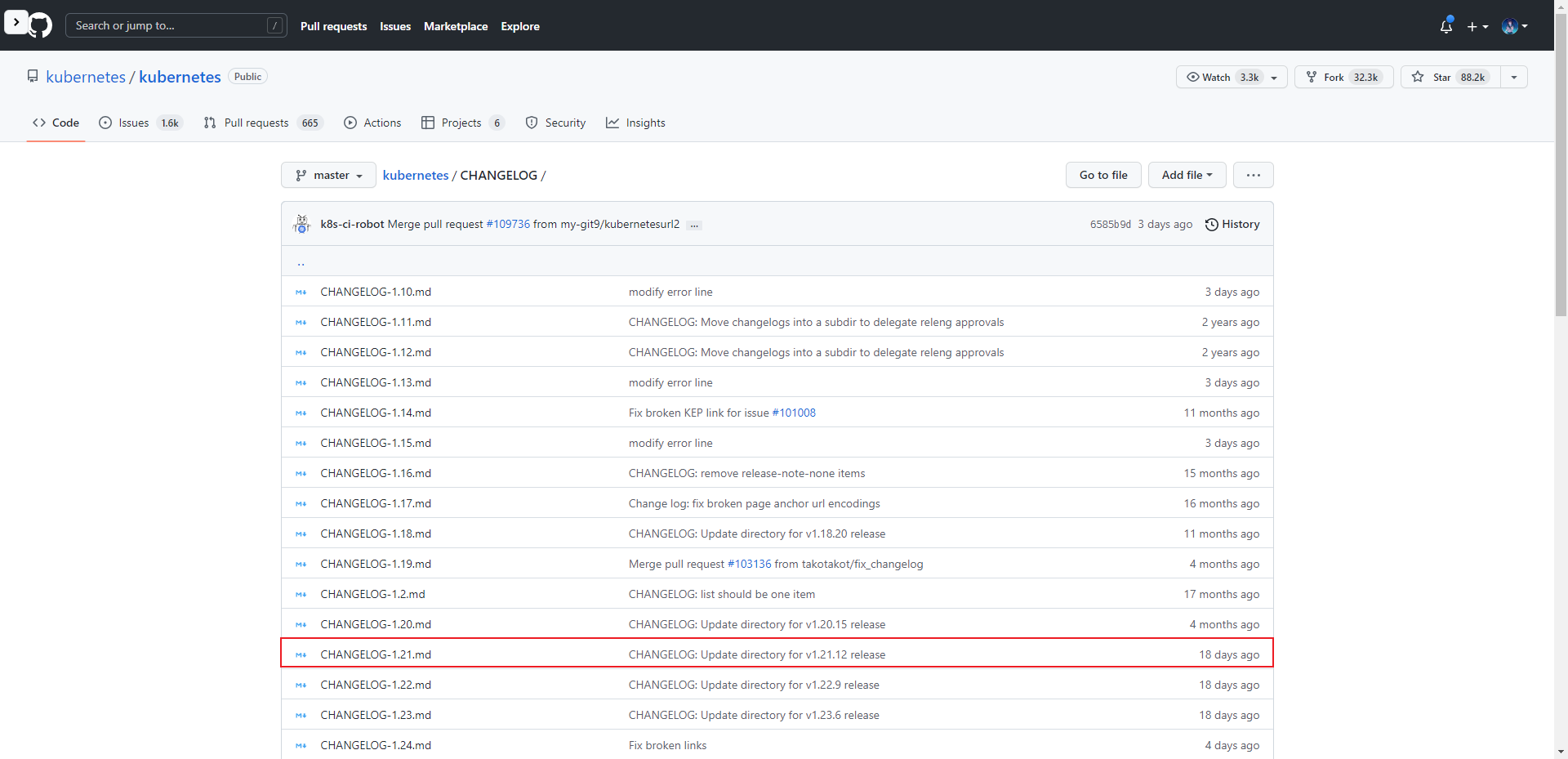
从文档中,我们可以知道 Docker 的版本是 v20.10 ,对应的 Kubernetes 的版本是 v1.21 。
2.2 前置条件
- 如果是虚拟机则需要让所有机器互通,最简单的做法就是关闭防火墙。
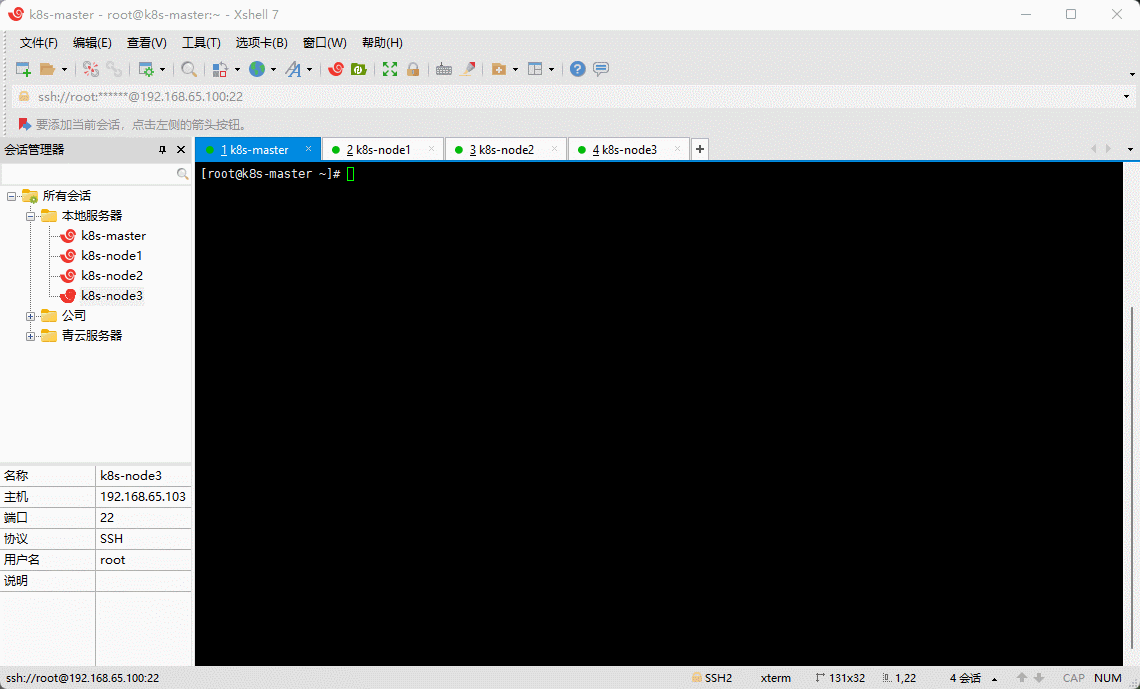
2.3 准备工作
2.3.1 升级系统内核
- 查看当前系统的版本:
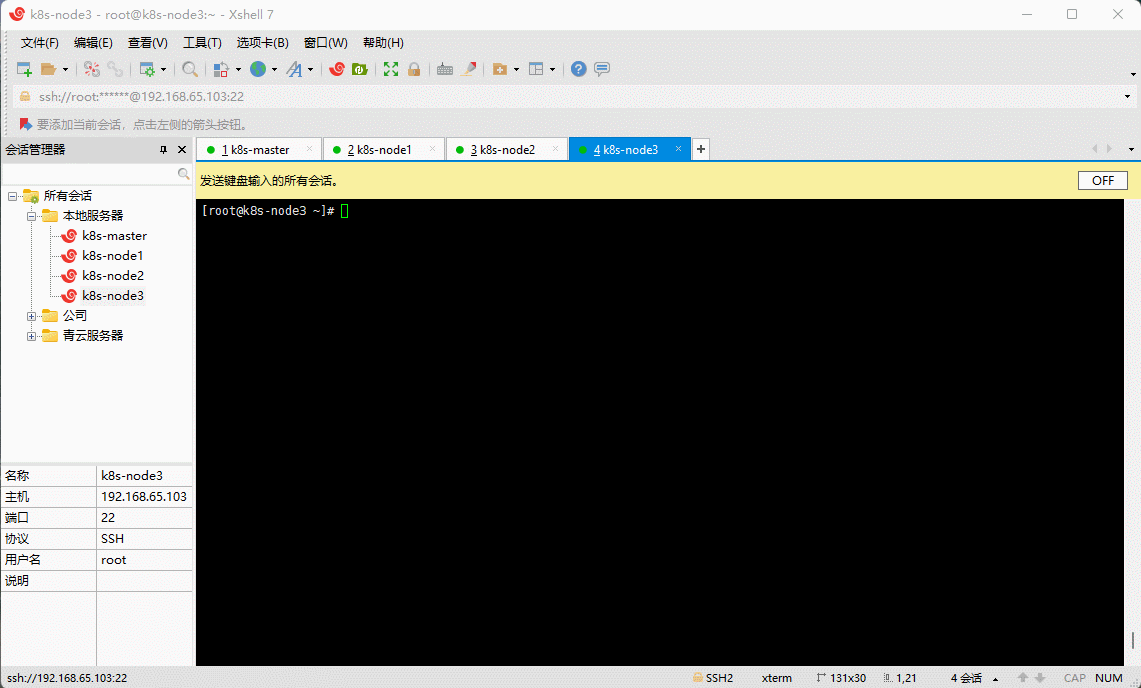
- 查看当前系统的内核:
默认的 3.10.0 实在是太低了,需要升级内核。
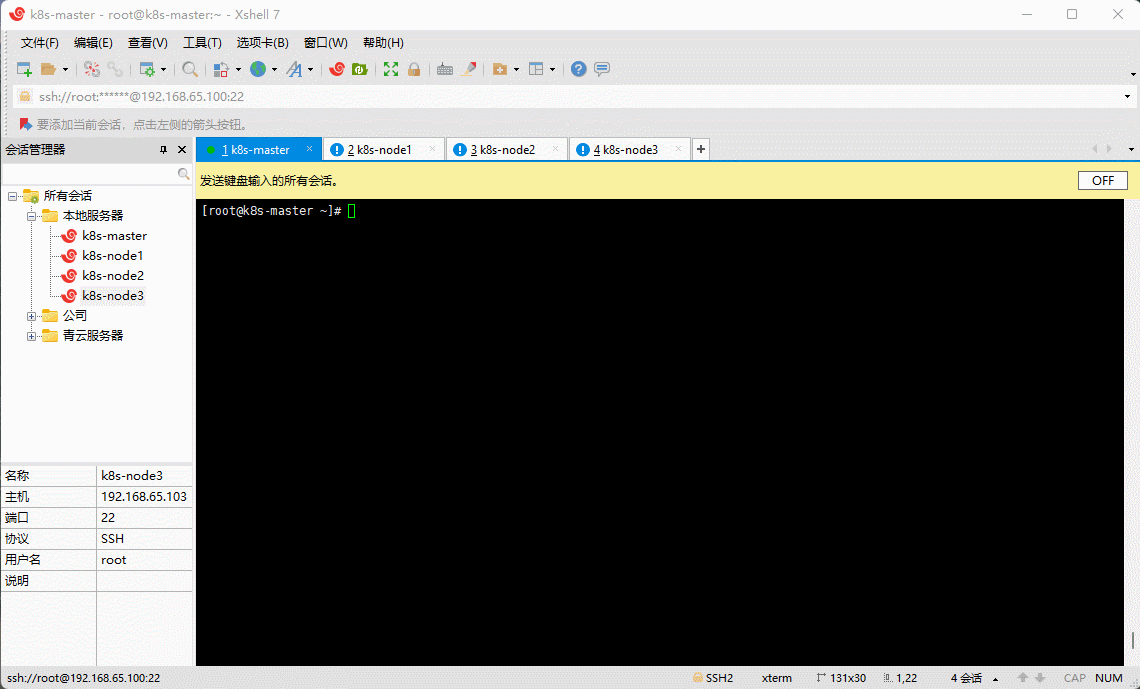
- 在 CentOS 7.x 上启用 ELRepo 仓库:
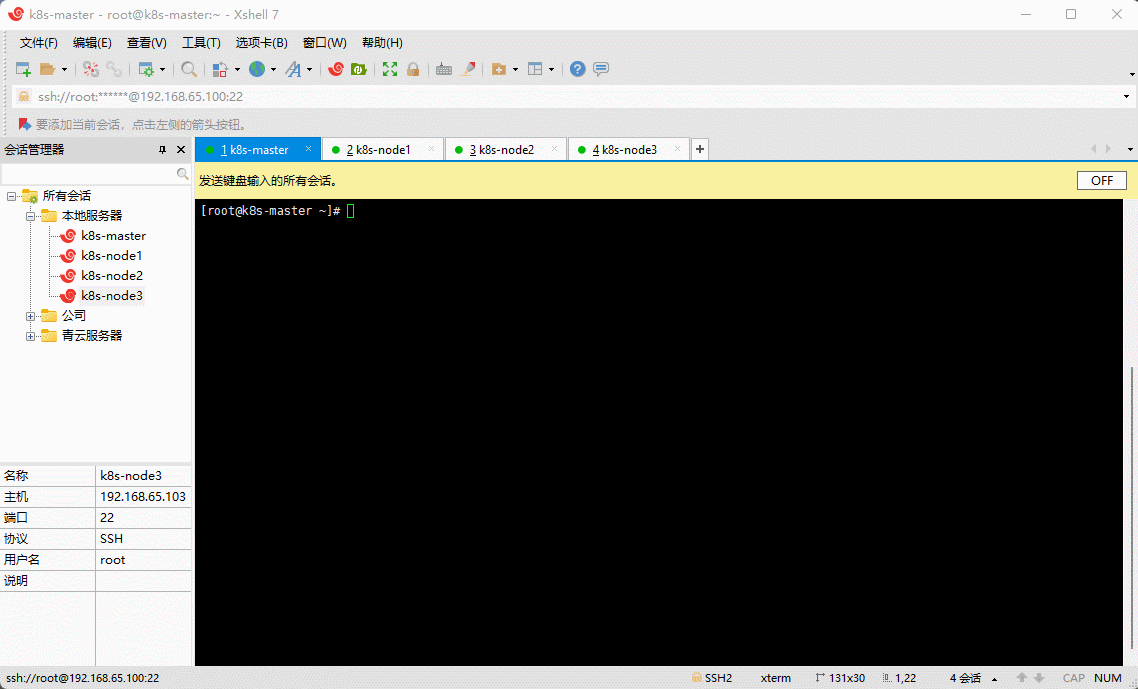
温馨提示:可以替换为清华源:
sed -i "s/mirrorlist=/#mirrorlist=/g" /etc/yum.repos.d/elrepo.repo、sed -i "s#elrepo.org/linux#mirrors.tuna.tsinghua.edu.cn/elrepo#g" /etc/yum.repos.d/elrepo.repo。
- 查看可用的系统内核相关包(选做):
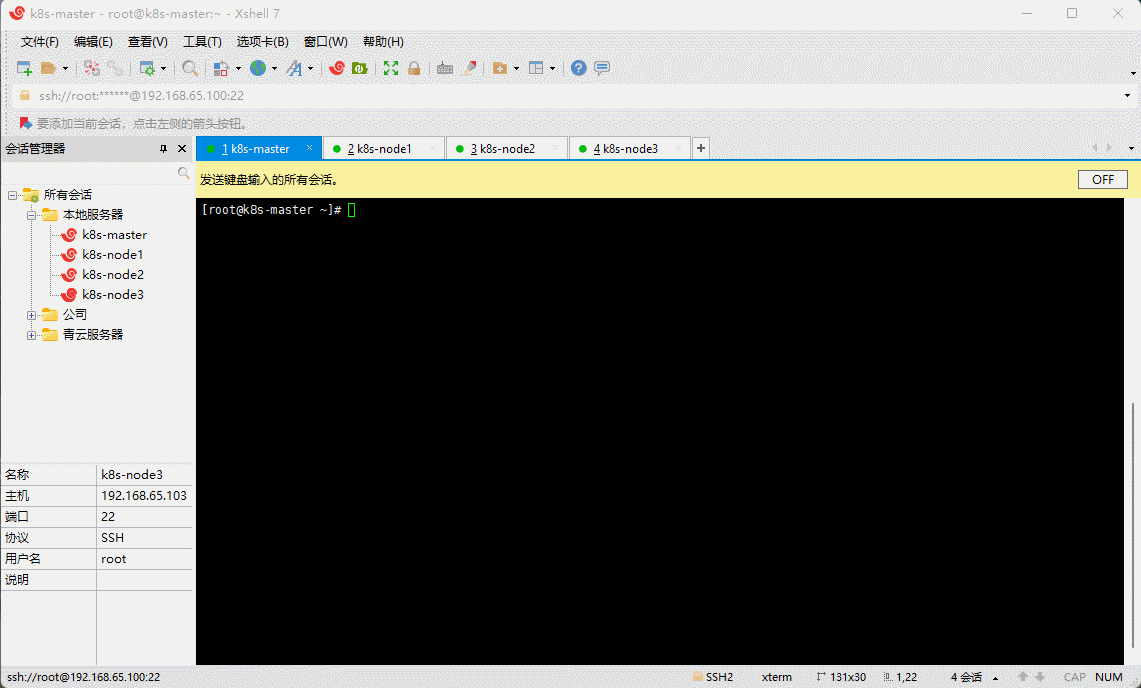
- 安装最新主线内核版本:
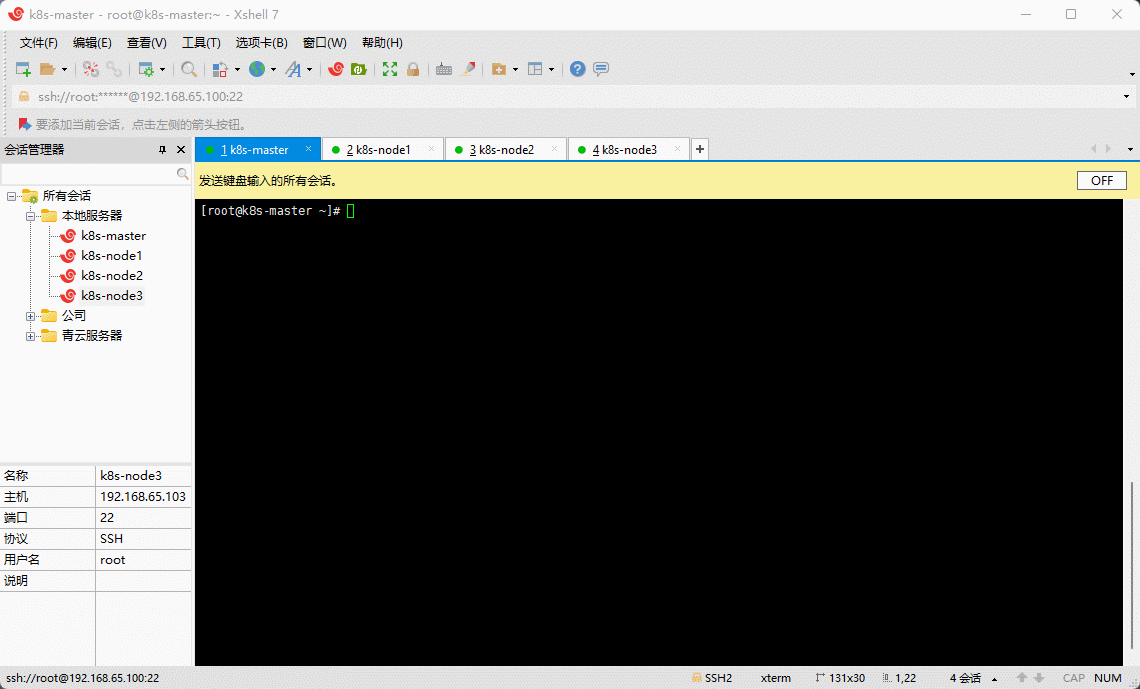
- 设置默认的内核版本:
GRUB_TIMEOUT=5
GRUB_DISTRIBUTOR="$(sed 's, release .*$,,g' /etc/system-release)"
GRUB_DEFAULT=0 # 修改此处,原来是 saved
GRUB_DISABLE_SUBMENU=true
GRUB_TERMINAL_OUTPUT="console"
GRUB_CMDLINE_LINUX="crashkernel=auto rd.lvm.lv=centos/root rd.lvm.lv=centos/swap rhgb quiet"
GRUB_DISABLE_RECOVERY="true"
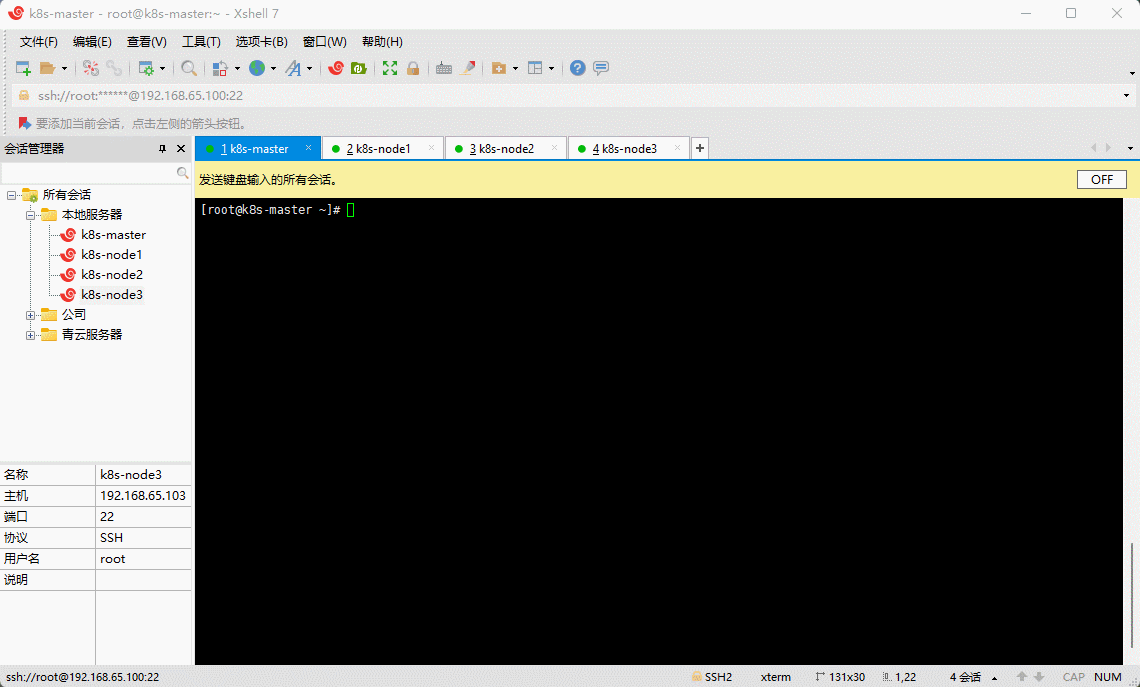
温馨提示:也可以使用这个命令
grub2-set-default 0。
- 重新创建内核配置:
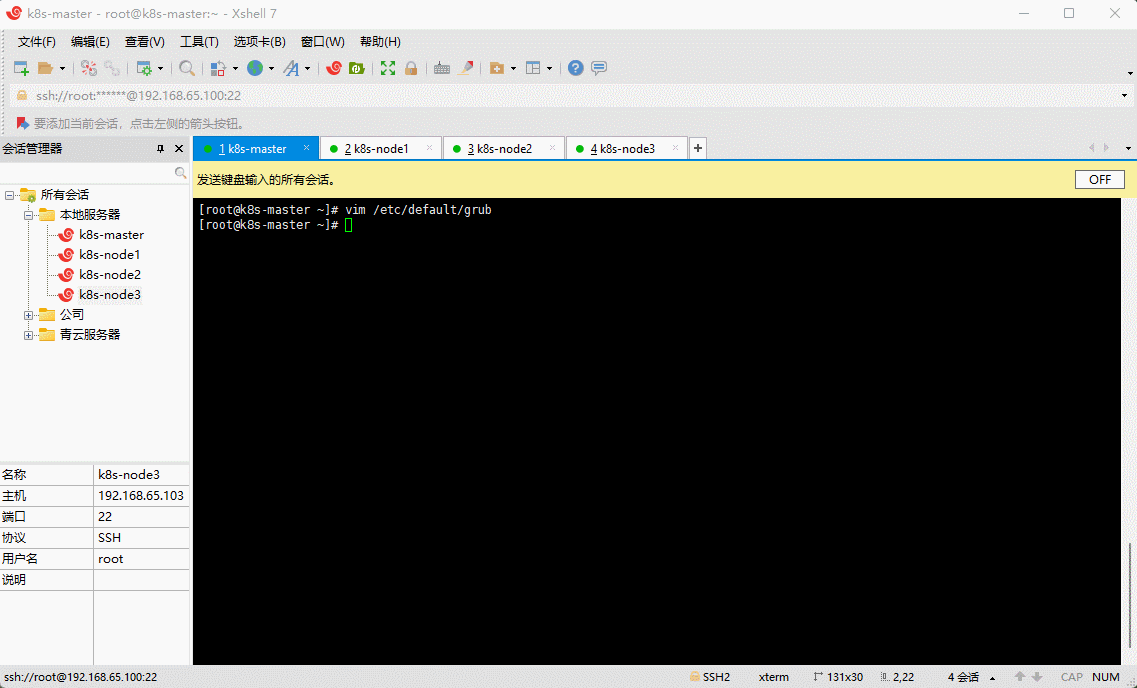
- 重启系统:
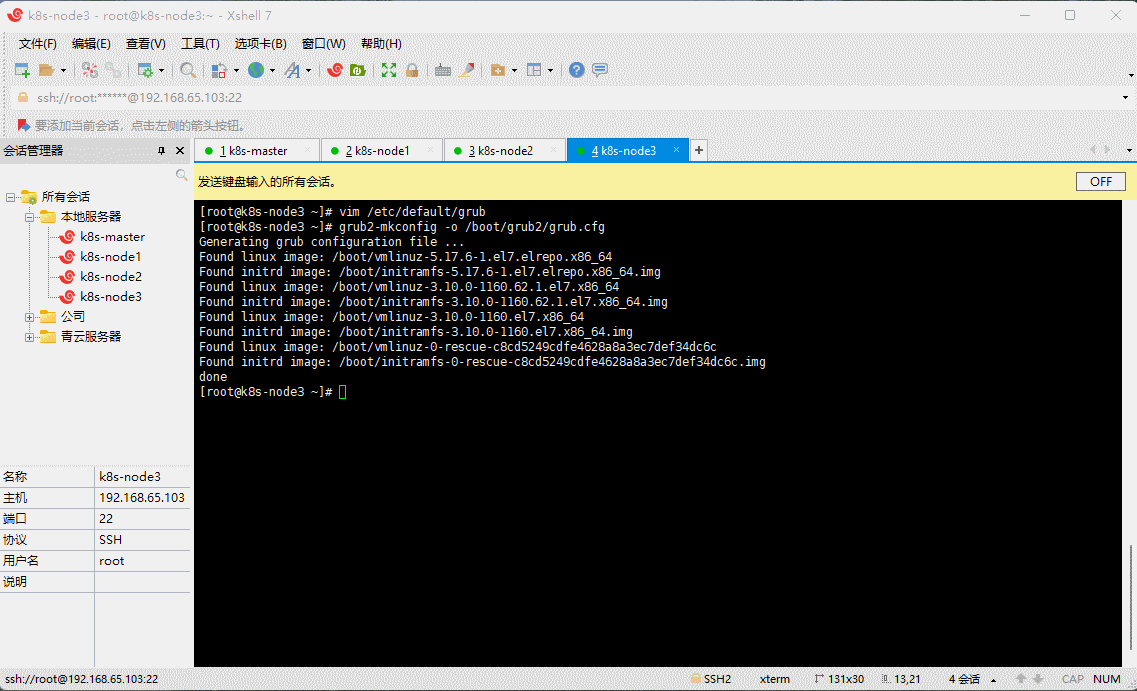
- 查看当前系统的内核:
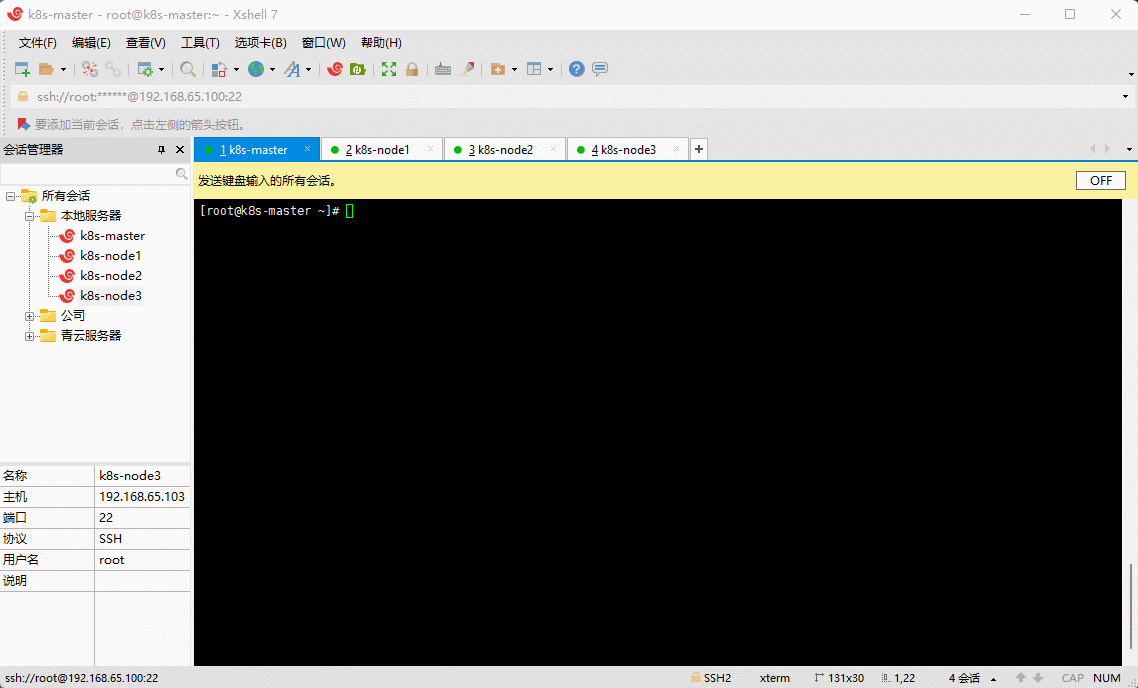
2.3.2 设置主机名
- 命令:
- 示例:
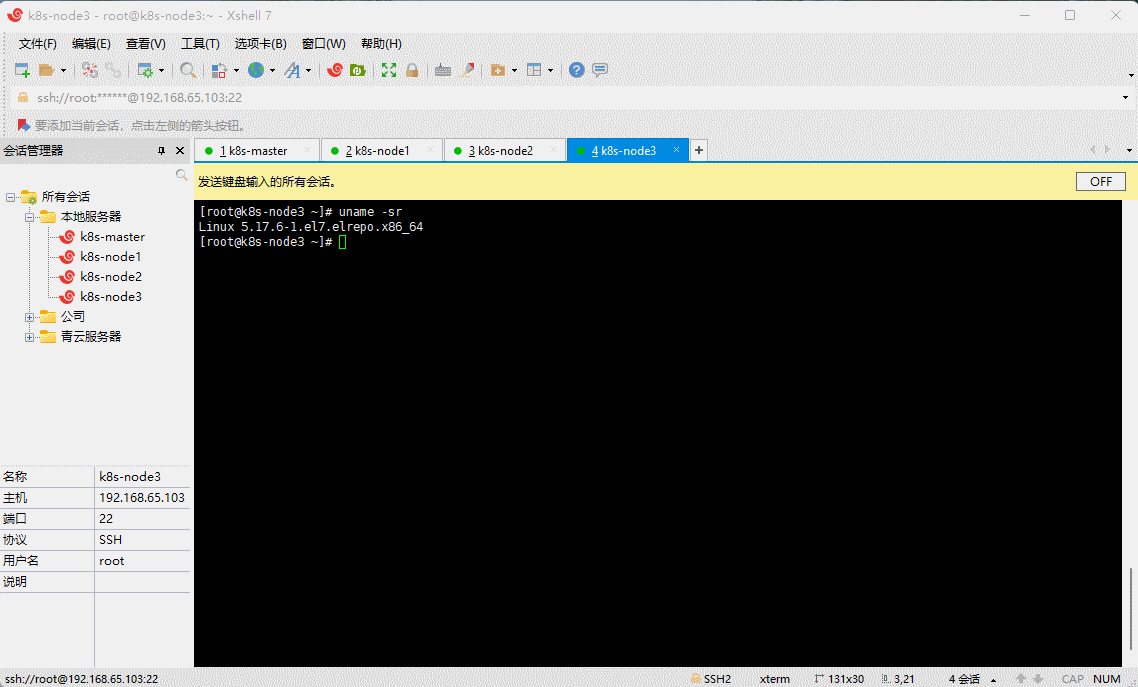
2.3.3 主机名解析
- 为了方便后面集群节点间的直接调用,需要配置一下主机名解析,企业中推荐使用内部的 DNS 服务器。
cat >> /etc/hosts << EOF
127.0.0.1 $(hostname)
192.168.65.100 k8s-master
192.168.65.101 k8s-node1
192.168.65.102 k8s-node2
192.168.65.103 k8s-node3
EOF
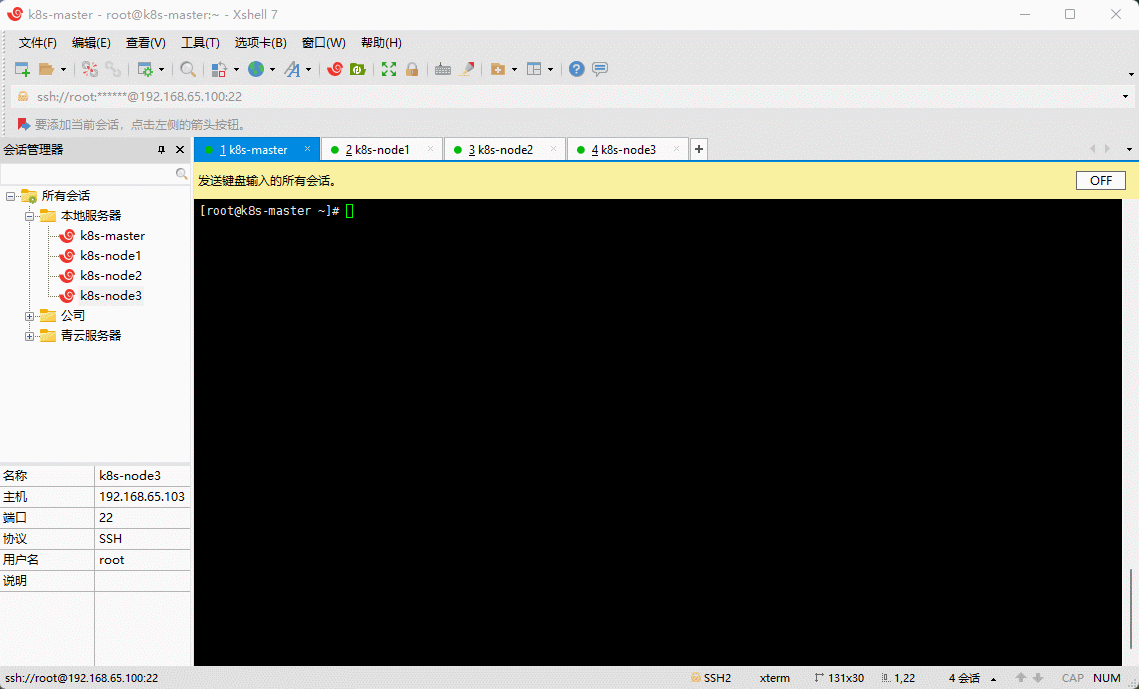
2.3.4 时间同步
- Kubernetes 要求集群中的节点时间必须精确一致,所以在每个节点上添加时间同步:

2.3.5 关闭 SELinux
- 查看 SELinux 是否开启:
- 永久关闭 SELinux ,需要重启:
- 关闭当前会话的 SELinux ,重启之后无效:
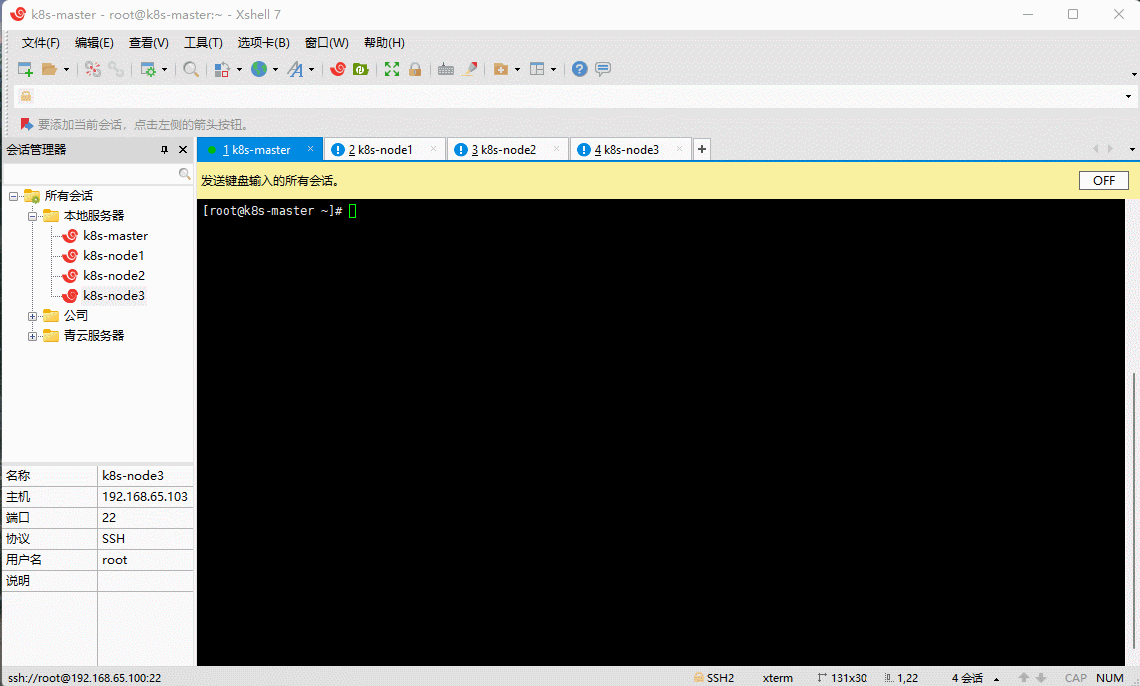
2.3.6 关闭 swap 分区
- 永久关闭 swap ,需要重启:
- 关闭当前会话的 swap ,重启之后无效:
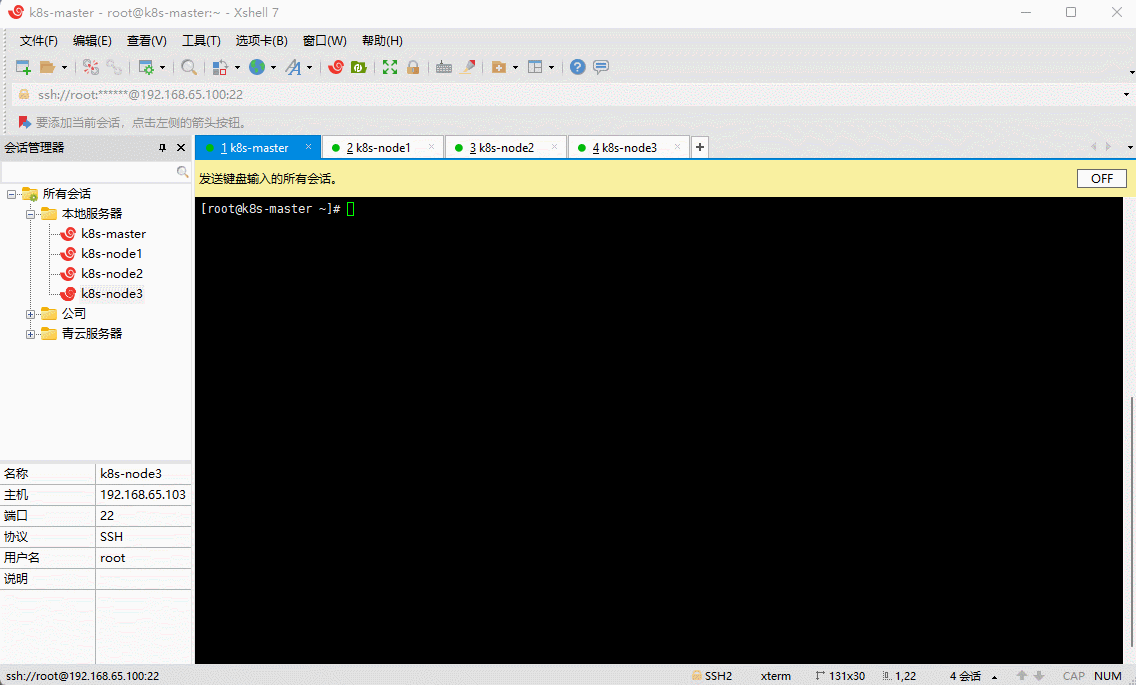
2.3.7 将桥接的 IPv4 流量传递到 iptables 的链
- 修改 /etc/sysctl.conf 文件:
# 如果有配置,则修改
sed -i "s#^net.ipv4.ip_forward.*#net.ipv4.ip_forward=1#g" /etc/sysctl.conf
sed -i "s#^net.bridge.bridge-nf-call-ip6tables.*#net.bridge.bridge-nf-call-ip6tables=1#g" /etc/sysctl.conf
sed -i "s#^net.bridge.bridge-nf-call-iptables.*#net.bridge.bridge-nf-call-iptables=1#g" /etc/sysctl.conf
sed -i "s#^net.ipv6.conf.all.disable_ipv6.*#net.ipv6.conf.all.disable_ipv6=1#g" /etc/sysctl.conf
sed -i "s#^net.ipv6.conf.default.disable_ipv6.*#net.ipv6.conf.default.disable_ipv6=1#g" /etc/sysctl.conf
sed -i "s#^net.ipv6.conf.lo.disable_ipv6.*#net.ipv6.conf.lo.disable_ipv6=1#g" /etc/sysctl.conf
sed -i "s#^net.ipv6.conf.all.forwarding.*#net.ipv6.conf.all.forwarding=1#g" /etc/sysctl.conf
# 可能没有,追加
echo "net.ipv4.ip_forward = 1" >> /etc/sysctl.conf
echo "net.bridge.bridge-nf-call-ip6tables = 1" >> /etc/sysctl.conf
echo "net.bridge.bridge-nf-call-iptables = 1" >> /etc/sysctl.conf
echo "net.ipv6.conf.all.disable_ipv6 = 1" >> /etc/sysctl.conf
echo "net.ipv6.conf.default.disable_ipv6 = 1" >> /etc/sysctl.conf
echo "net.ipv6.conf.lo.disable_ipv6 = 1" >> /etc/sysctl.conf
echo "net.ipv6.conf.all.forwarding = 1" >> /etc/sysctl.conf
- 加载 br_netfilter 模块:
- 持久化修改(保留配置包本地文件,重启系统或服务进程仍然有效):

2.3.8 开启 ipvs
- 在 Kubernetes 中 service 有两种代理模型,一种是基于 iptables ,另一种是基于 ipvs 的。
- ipvs 的性能要高于 iptables 的,但是如果要使用它,需要手动载入 ipvs 模块。
- 在所有机器安装 ipset 和 ipvsadm :
- 在所有机器执行如下脚本:
cat > /etc/sysconfig/modules/ipvs.modules <<EOF
#!/bin/bash
modprobe -- ip_vs
modprobe -- ip_vs_rr
modprobe -- ip_vs_wrr
modprobe -- ip_vs_sh
modprobe -- nf_conntrack
EOF
- 授权、运行、检查是否加载:
chmod 755 /etc/sysconfig/modules/ipvs.modules && bash /etc/sysconfig/modules/ipvs.modules && lsmod | grep -e ip_vs -e nf_conntrack_ipv4

2.3.9 重启
- 所有机器重启:
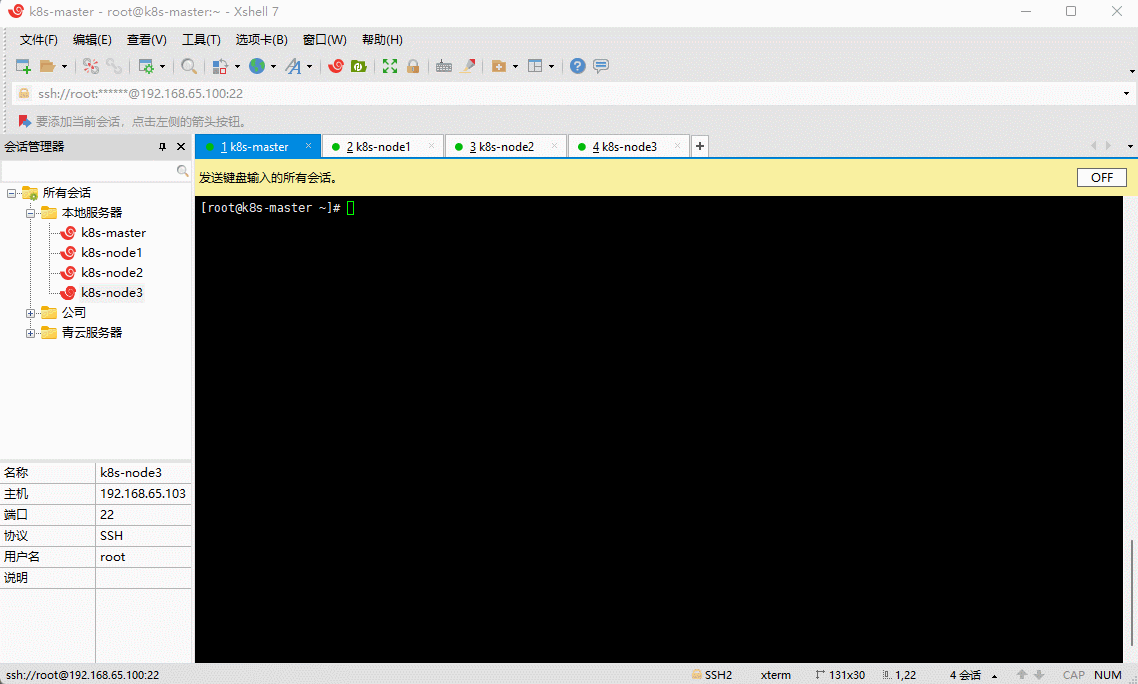
2.4 Docker 安装
所有机器都需要安装 Docker 。
- 卸载旧版本:
yum remove docker \
docker-client \
docker-client-latest \
docker-common \
docker-latest \
docker-latest-logrotate \
docker-logrotate \
docker-engine

- yum 安装 gcc 相关:
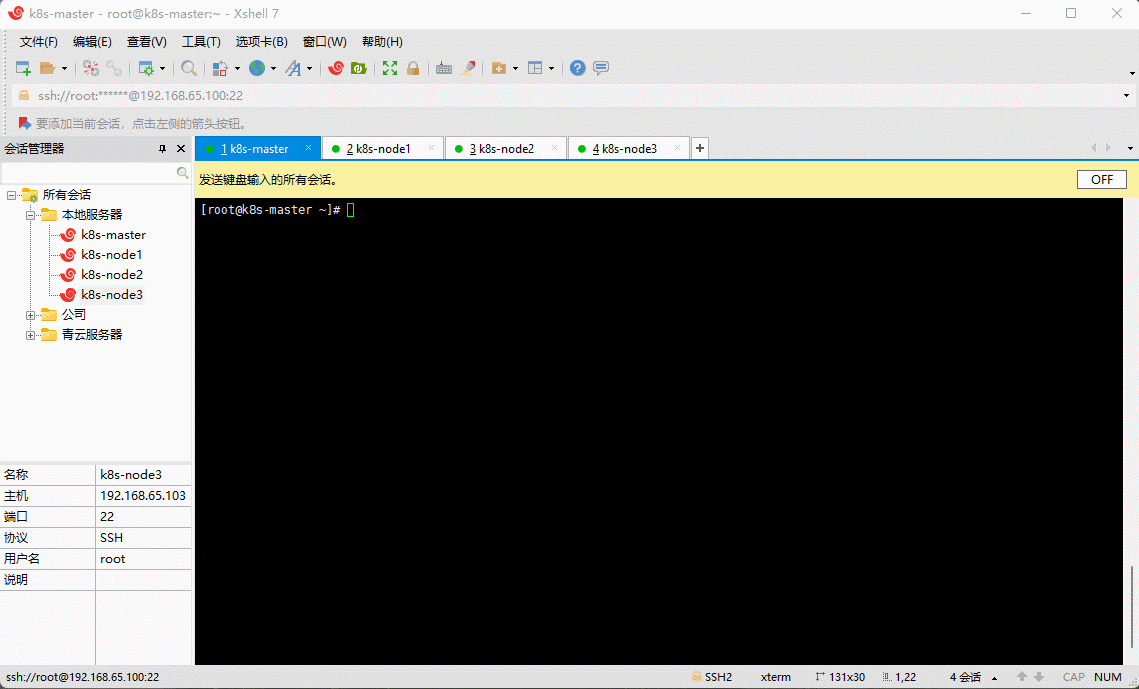
- 安装所需要的软件包:
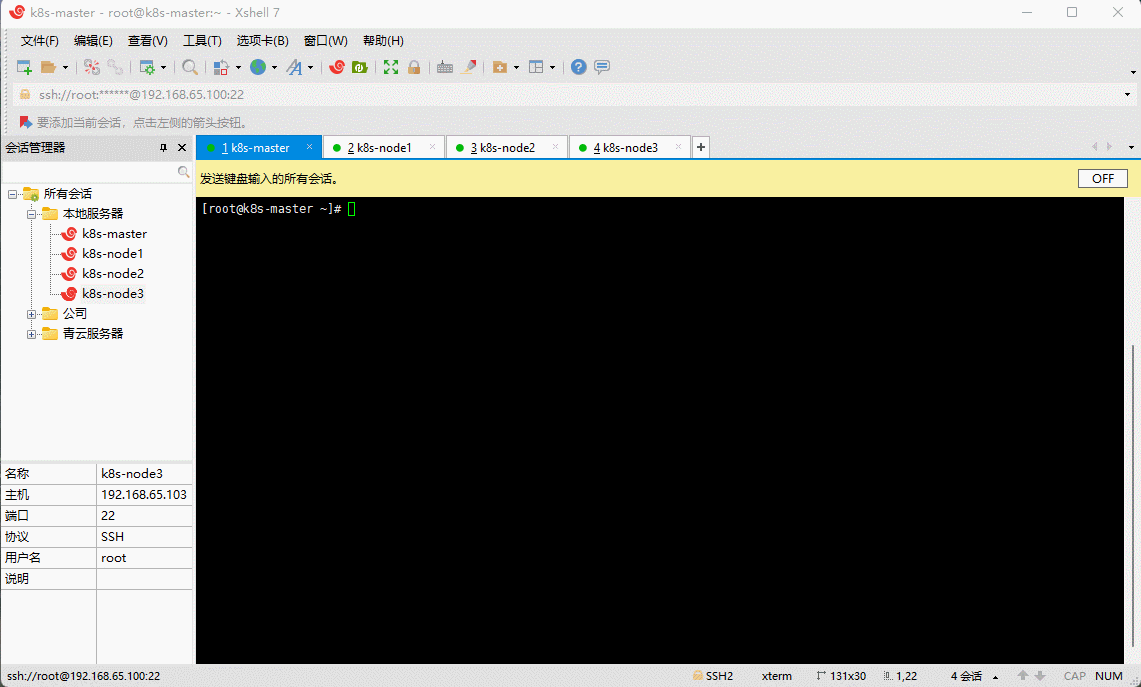
- 设置 stable 镜像仓库:
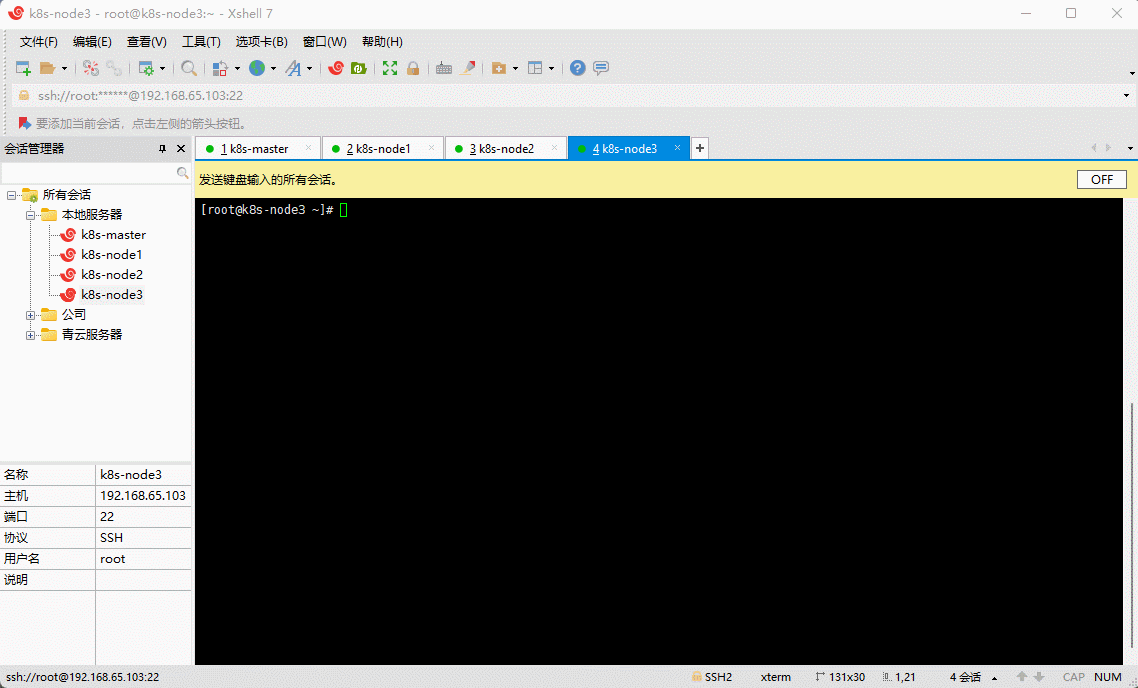
- 更新 yum 软件包索引:

- 查看存储库中 Docker 的版本(选做):
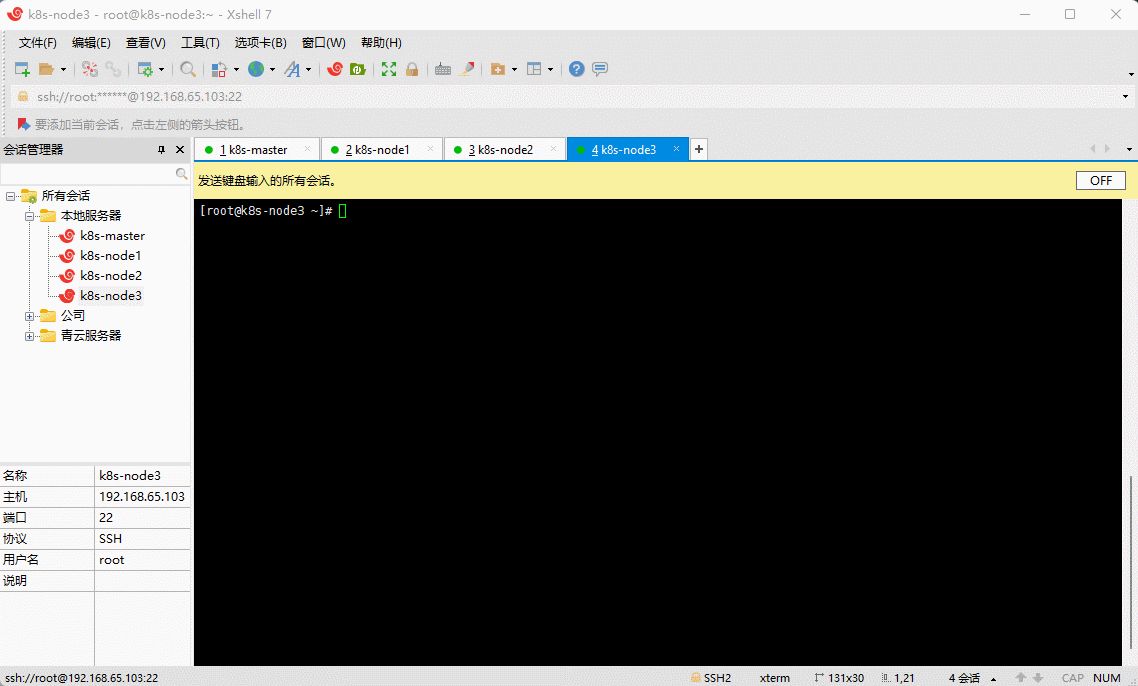
- 安装指定版本的 Docker(v20.10) :
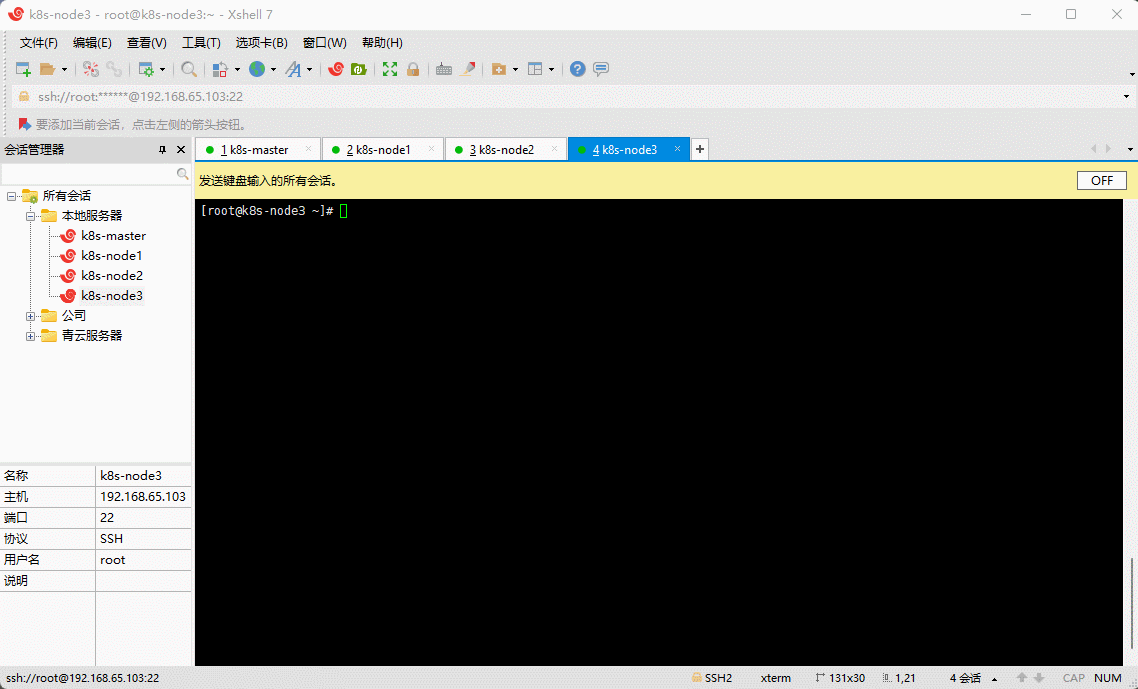
- 启动 Docker :
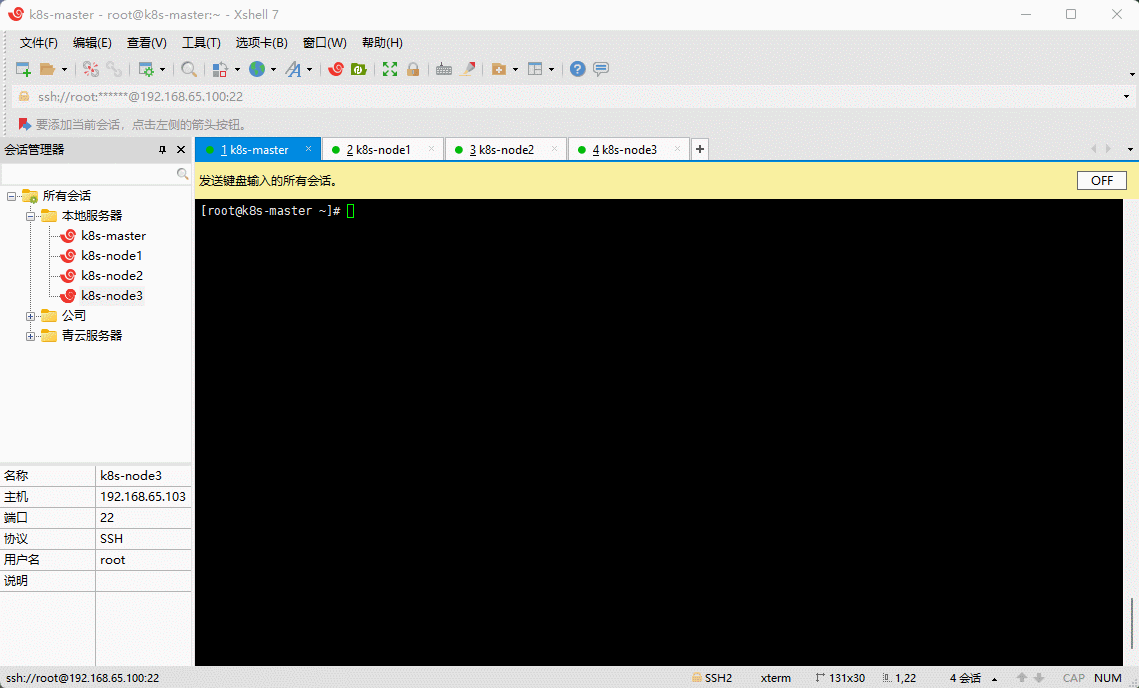
- 验证 Docker 是否安装成功:
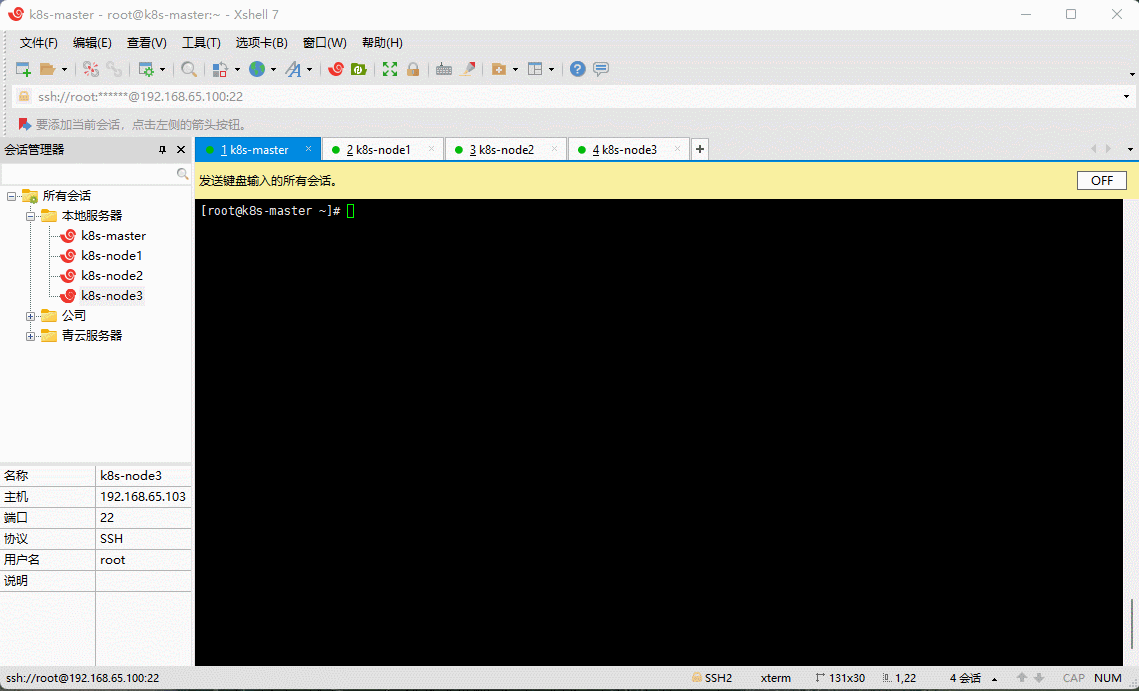
- 阿里云镜像加速:
sudo tee /etc/docker/daemon.json <<-'EOF'
{
"exec-opts": ["native.cgroupdriver=systemd"],
"registry-mirrors": ["https://du3ia00u.mirror.aliyuncs.com"],
"live-restore": true,
"log-driver":"json-file",
"log-opts": {"max-size":"500m", "max-file":"3"},
"max-concurrent-downloads": 10,
"max-concurrent-uploads": 5,
"storage-driver": "overlay2"
}
EOF
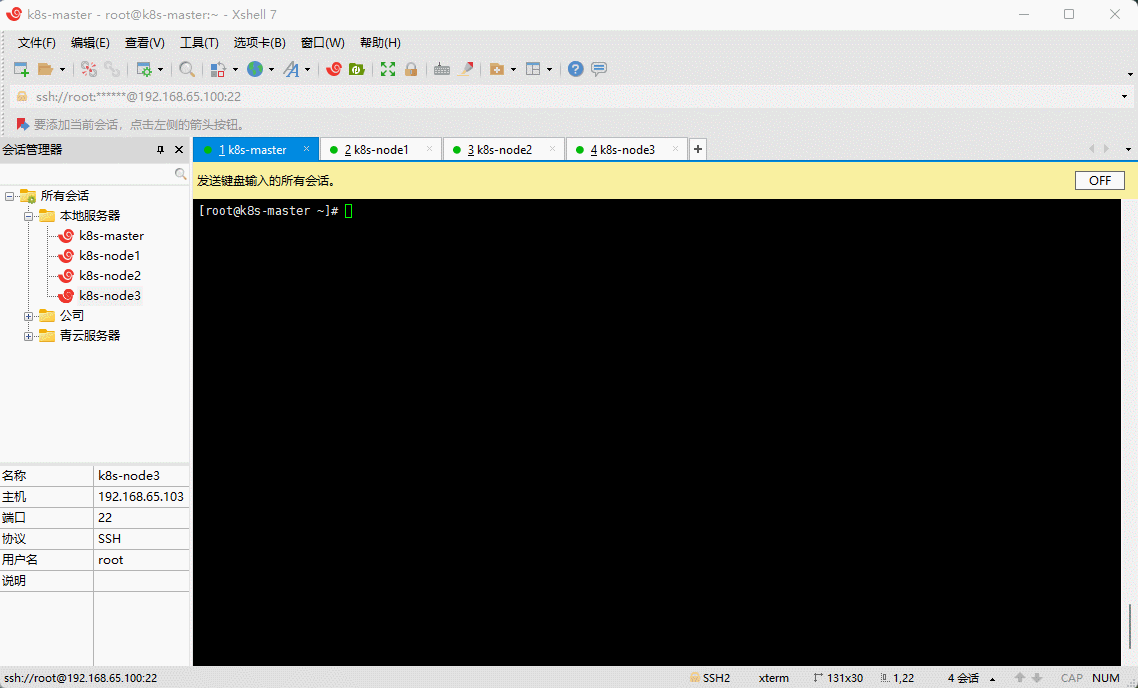
2.5 添加阿里云的 Kubernetes 的 YUM 源
- 由于 Kubernetes 的镜像源在国外,非常慢,这里切换成国内的阿里云镜像源(所有机器均需执行下面命令):
cat > /etc/yum.repos.d/kubernetes.repo << EOF
[kubernetes]
name=Kubernetes
baseurl=https://mirrors.aliyun.com/kubernetes/yum/repos/kubernetes-el7-x86_64
enabled=1
gpgcheck=0
repo_gpgcheck=0
gpgkey=https://mirrors.aliyun.com/kubernetes/yum/doc/yum-key.gpg https://mirrors.aliyun.com/kubernetes/yum/doc/rpm-package-key.gpg
EOF
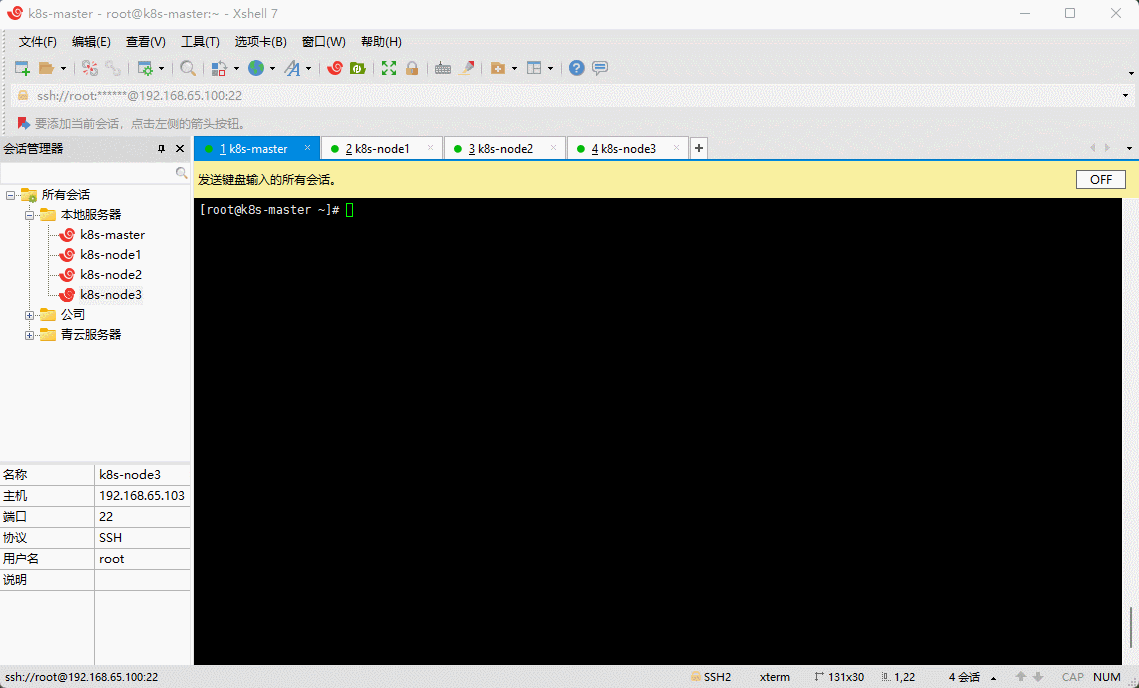
2.6 安装 kubelet 、kubeadm 和 kubectl
- Kubernetes 架构图:
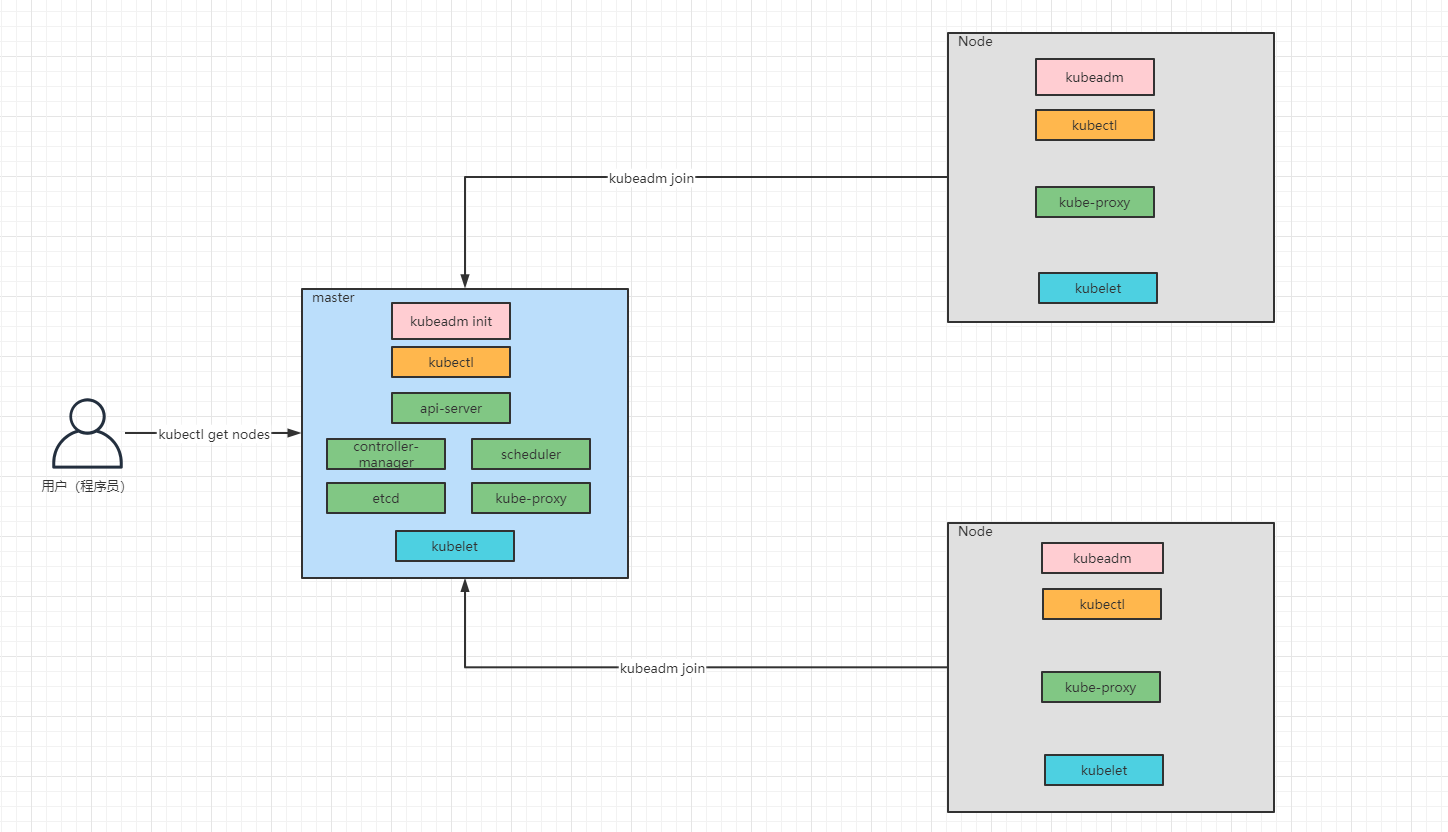
- 安装 kubelet 、kubeadm 和 kubectl ,所有机器均需执行以下命令:
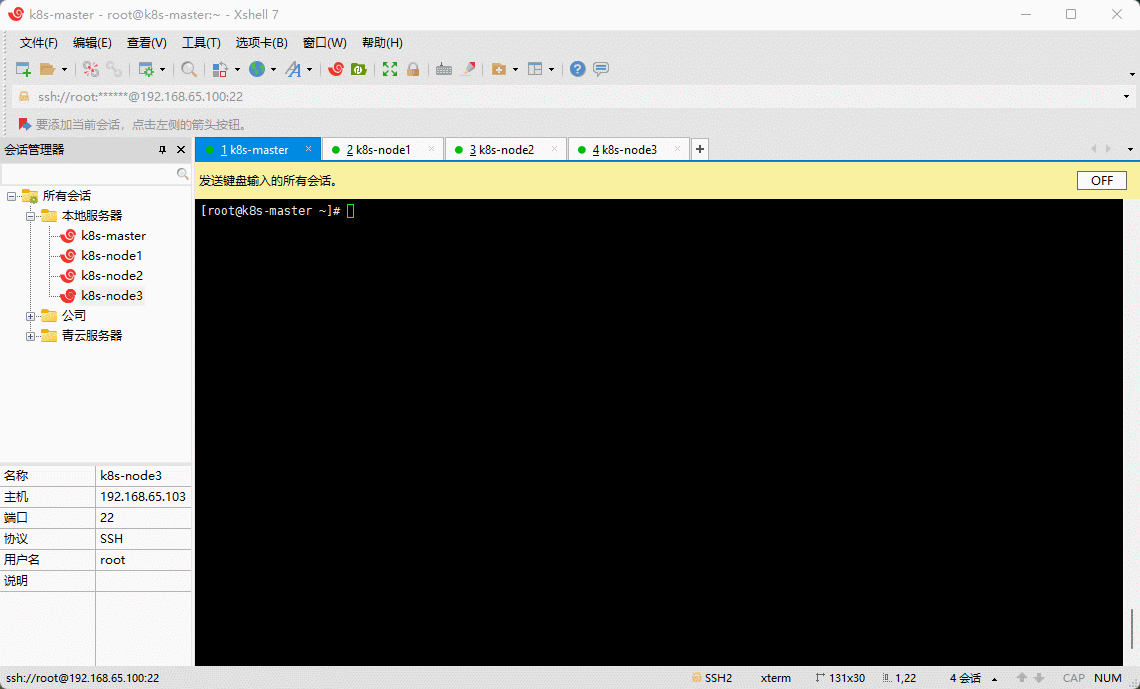
- 为了实现 Docker 使用的 cgroup drvier 和 kubelet 使用的 cgroup drver 一致,建议修改
/etc/sysconfig/kubelet文件的内容,所有机器均需执行以下命令:
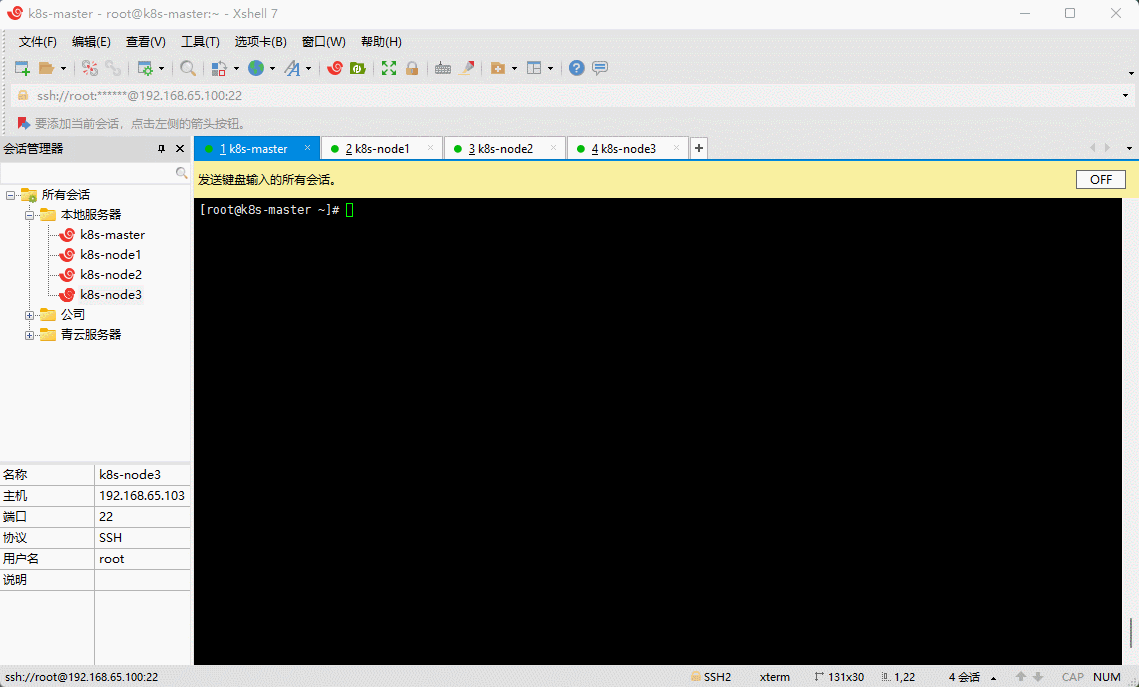
- 设置为开机自启动即可,由于没有生成配置文件,集群初始化后自动启动:

2.7 查看 Kubernetes 安装所需镜像(选做)
- 查看 Kubernetes 安装所需镜像:
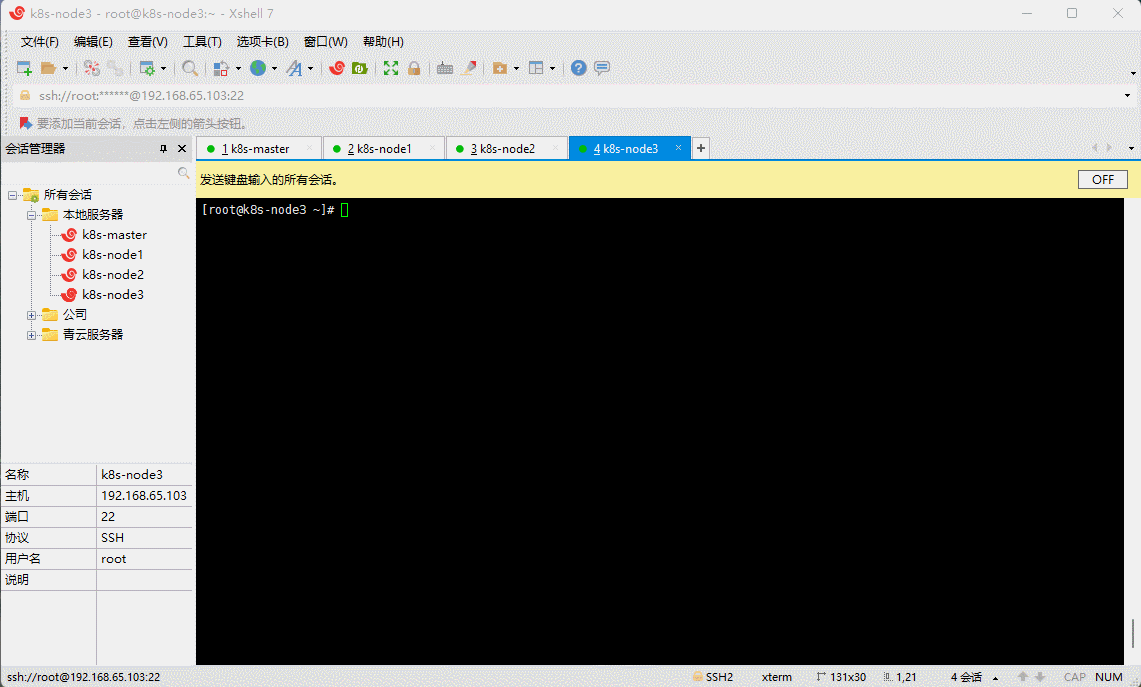
2.8 下载 Kubernetes 安装所需镜像
- 所有机器均通过 Docker 下载所需镜像:
docker pull registry.cn-hangzhou.aliyuncs.com/google_containers/kube-apiserver:v1.21.10
docker pull registry.cn-hangzhou.aliyuncs.com/google_containers/kube-controller-manager:v1.21.10
docker pull registry.cn-hangzhou.aliyuncs.com/google_containers/kube-scheduler:v1.21.10
docker pull registry.cn-hangzhou.aliyuncs.com/google_containers/kube-proxy:v1.21.10
docker pull registry.cn-hangzhou.aliyuncs.com/google_containers/pause:3.4.1
docker pull registry.cn-hangzhou.aliyuncs.com/google_containers/etcd:3.4.13-0
docker pull registry.cn-hangzhou.aliyuncs.com/google_containers/coredns:v1.8.0
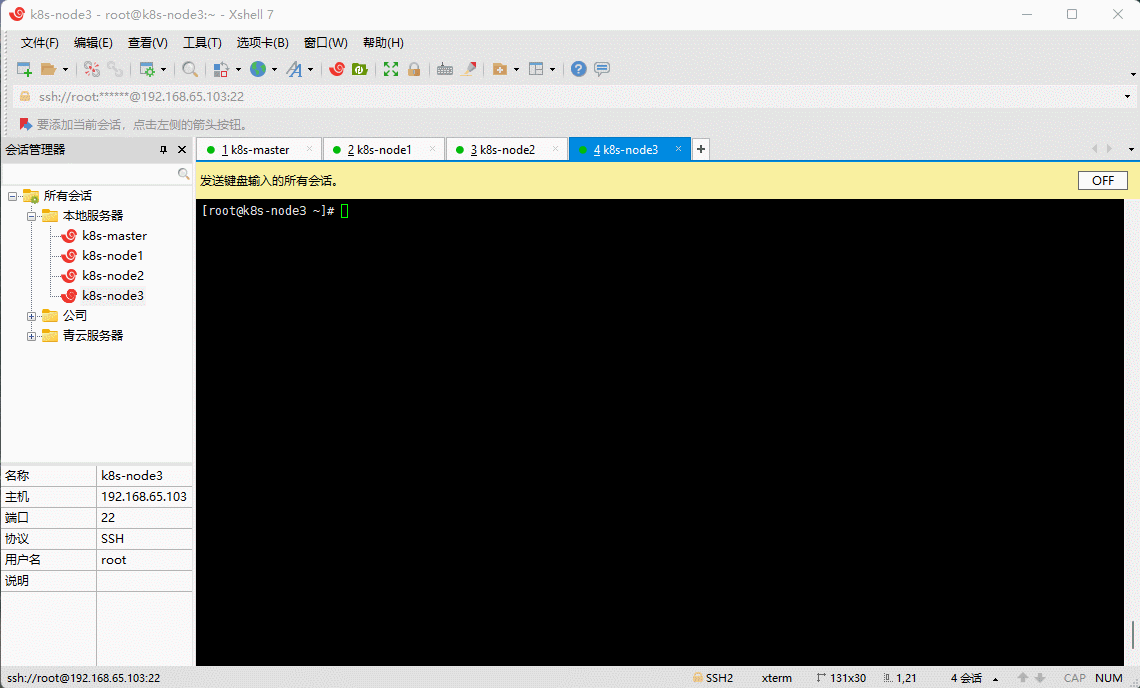
- 给 coredns 镜像重新打 tag :
docker tag registry.cn-hangzhou.aliyuncs.com/google_containers/coredns:v1.8.0 registry.cn-hangzhou.aliyuncs.com/google_containers/coredns/coredns:v1.8.0
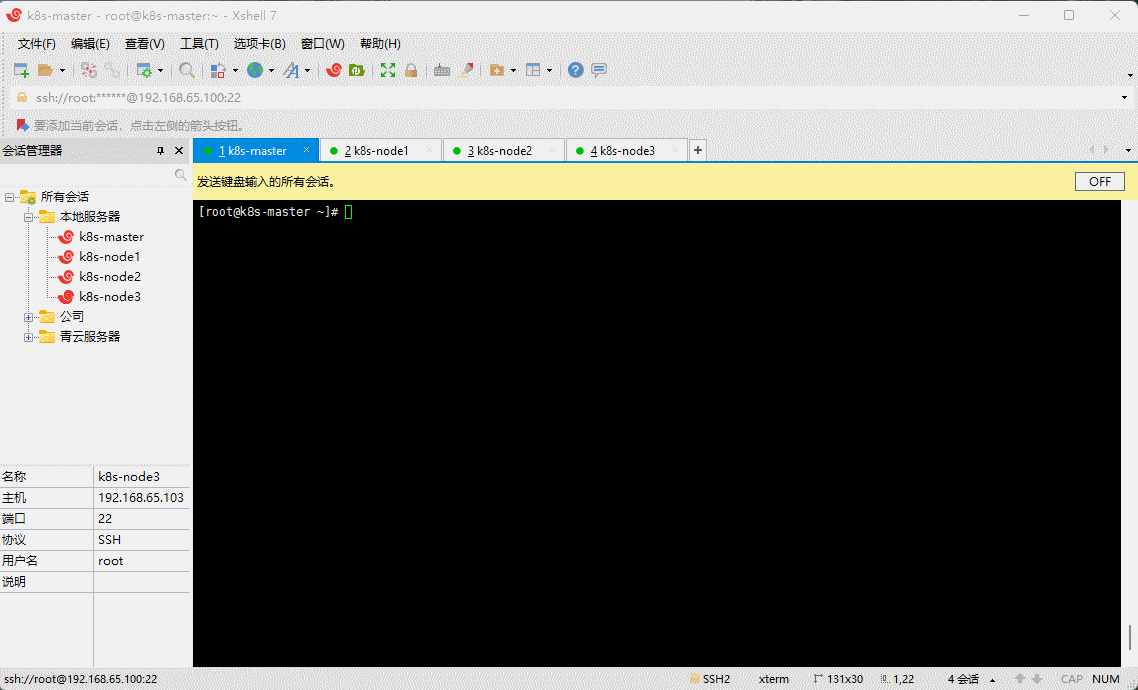
2.9 部署 Kubernetes 的 Master 节点
- 在 k8s-master (192.168.65.100)机器上部署 Kubernetes 的 Master 节点:
# 由于默认拉取镜像地址k8s.gcr.io国内无法访问,这里需要指定阿里云镜像仓库地址
kubeadm init \
--apiserver-advertise-address=192.168.65.100 \
--image-repository=registry.cn-hangzhou.aliyuncs.com/google_containers \
--kubernetes-version=v1.21.10 \
--service-cidr=10.96.0.0/16 \
--pod-network-cidr=10.244.0.0/16
注意:
- apiserver-advertise-address 一定要是主机的 IP 地址。
- apiserver-advertise-address 、service-cidr 和 pod-network-cidr 不能在同一个网络范围内。
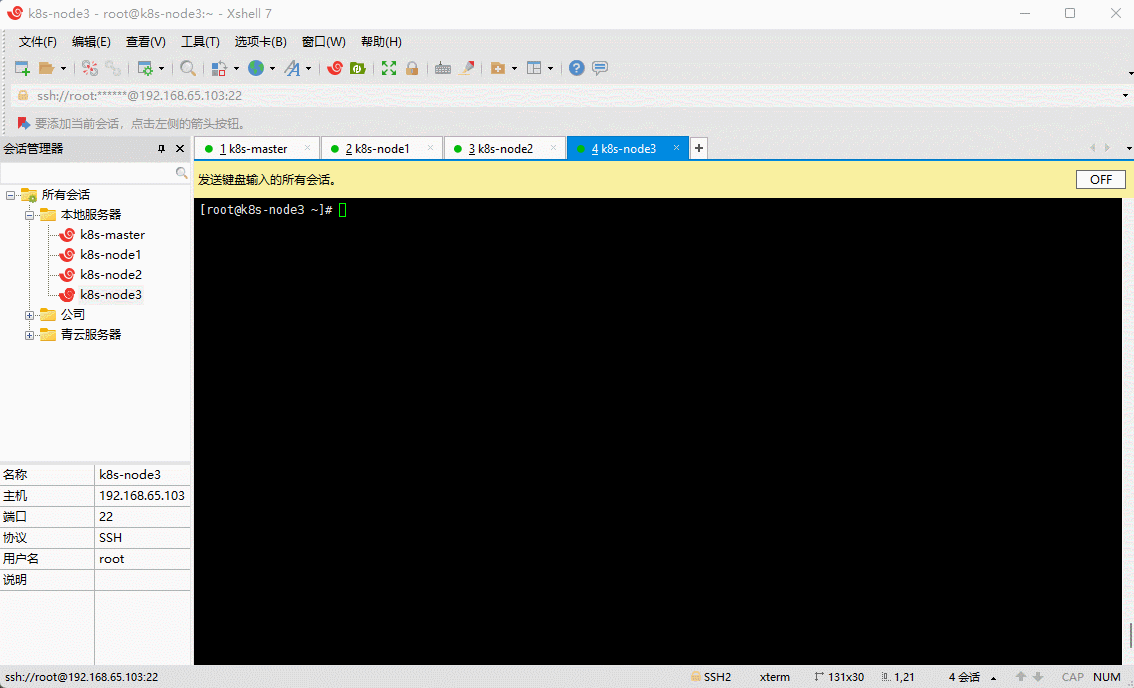
- 日志:
Your Kubernetes control-plane has initialized successfully!
To start using your cluster, you need to run the following as a regular user:
mkdir -p $HOME/.kube
sudo cp -i /etc/kubernetes/admin.conf $HOME/.kube/config
sudo chown $(id -u):$(id -g) $HOME/.kube/config
Alternatively, if you are the root user, you can run:
export KUBECONFIG=/etc/kubernetes/admin.conf
You should now deploy a pod network to the cluster.
Run "kubectl apply -f [podnetwork].yaml" with one of the options listed at:
https://kubernetes.io/docs/concepts/cluster-administration/addons/
Then you can join any number of worker nodes by running the following on each as root:
kubeadm join 192.168.65.100:6443 --token 5oqv3n.4n2ak6e1y4h35cra \
--discovery-token-ca-cert-hash sha256:d82d66af9a8b1ef328501eb082235c65627be53918cb910501e088a78c766425
- 根据日志提示操作,在 k8s-master (192.168.65.100) 执行如下命令:
mkdir -p $HOME/.kube
sudo cp -i /etc/kubernetes/admin.conf $HOME/.kube/config
sudo chown $(id -u):$(id -g) $HOME/.kube/config
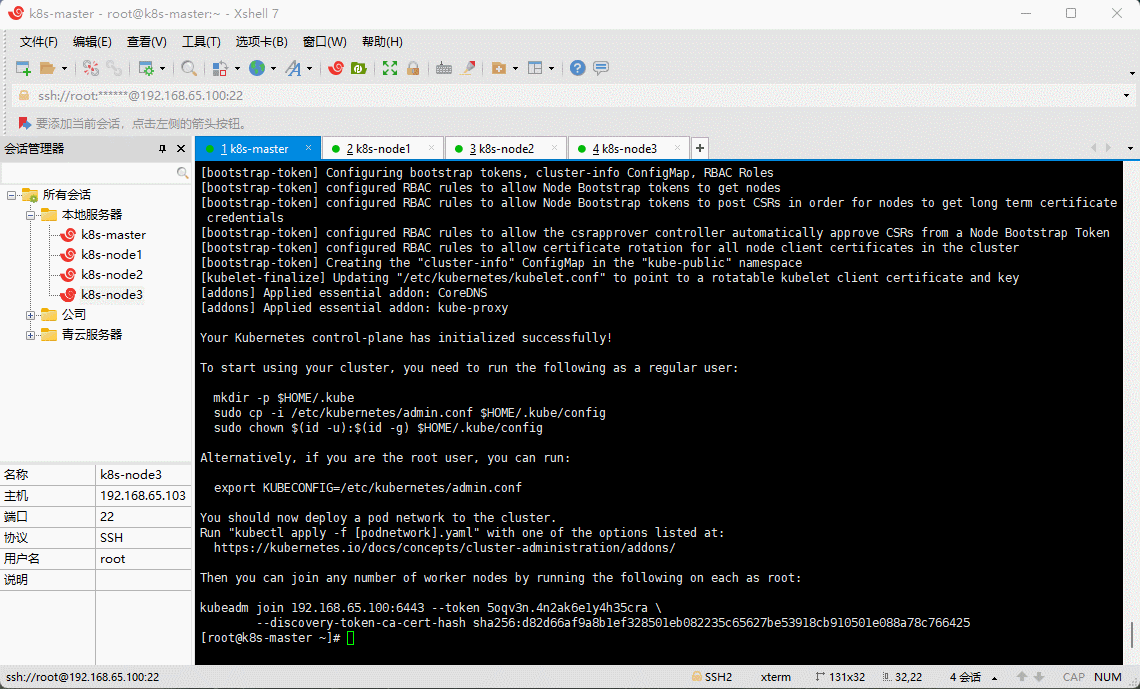
- 默认的 token 有效期为 2 小时,当过期之后,该 token 就不能用了,这时可以使用如下的命令创建 token :
2.10 部署 Kubernetes 的 Node节点
- 根据日志提示操作,在 k8s-node1(192.168.65.101)、k8s-node2(192.168.65.102)和 k8s-node3(192.168.65.103) 执行如下命令:
kubeadm join 192.168.65.100:6443 --token 5oqv3n.4n2ak6e1y4h35cra \
--discovery-token-ca-cert-hash sha256:d82d66af9a8b1ef328501eb082235c65627be53918cb910501e088a78c766425
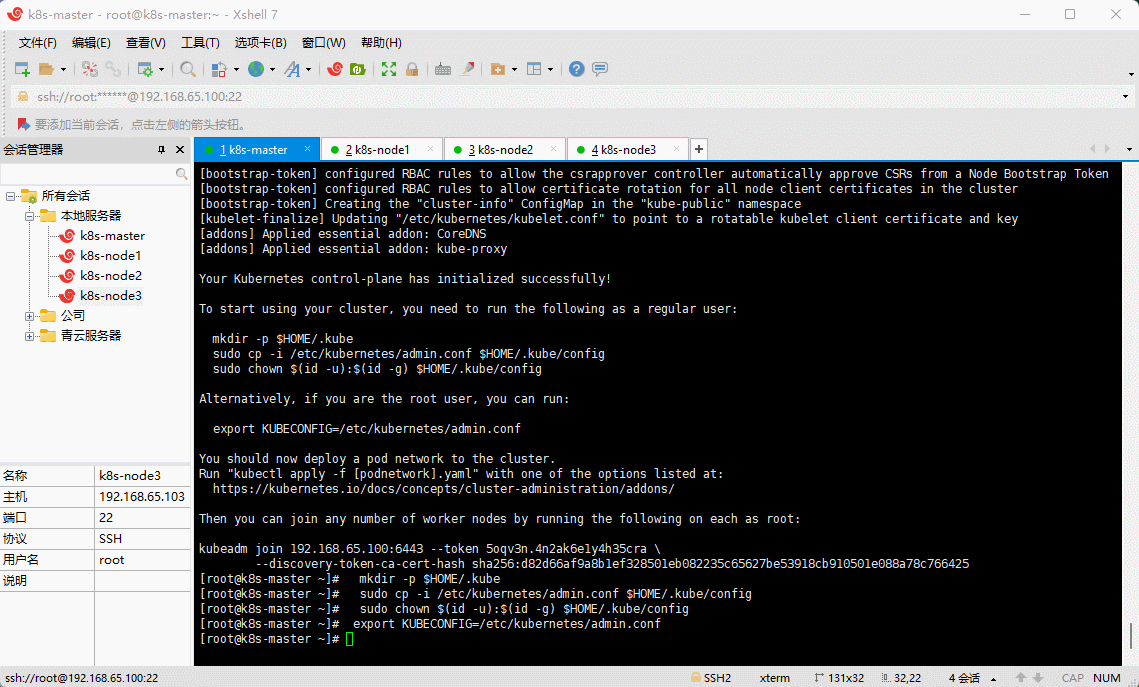
2.11 部署网络插件
- 官网。
- Kubernetes 支持多种网络插件,比如 flannel、calico、canal 等,任选一种即可,本次选择 calico。
- calico 和 k8s 的版本对应 。
备注:为什么使用 3.19 , 原因在这里 。
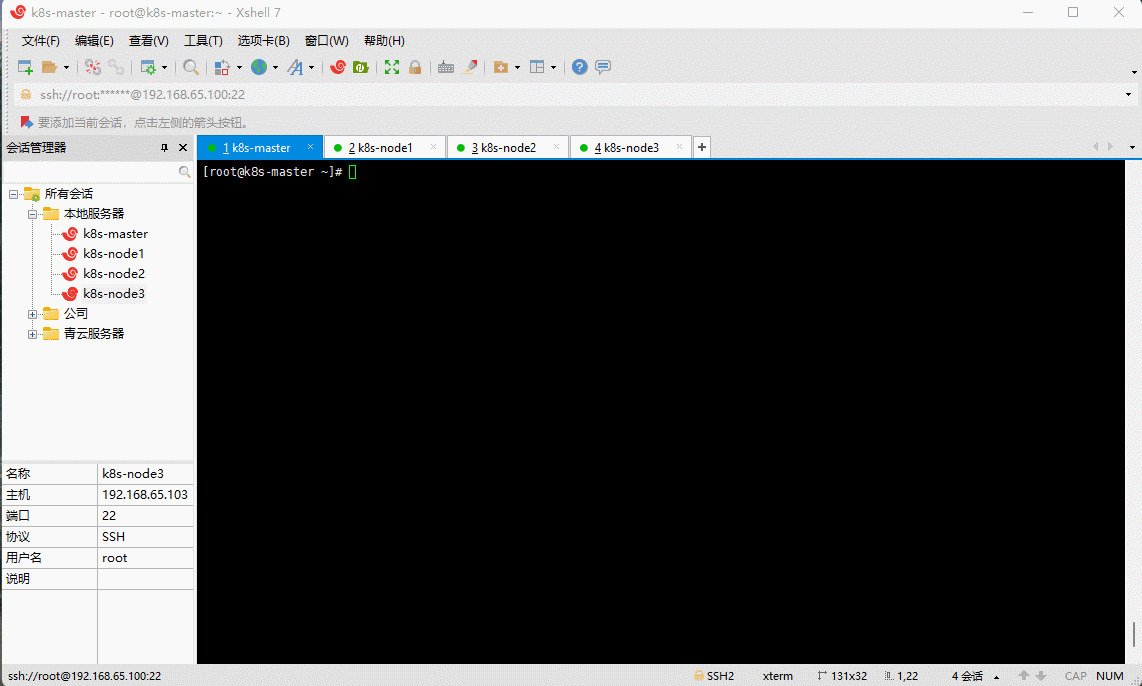
- 查看部署 CNI 网络插件进度:
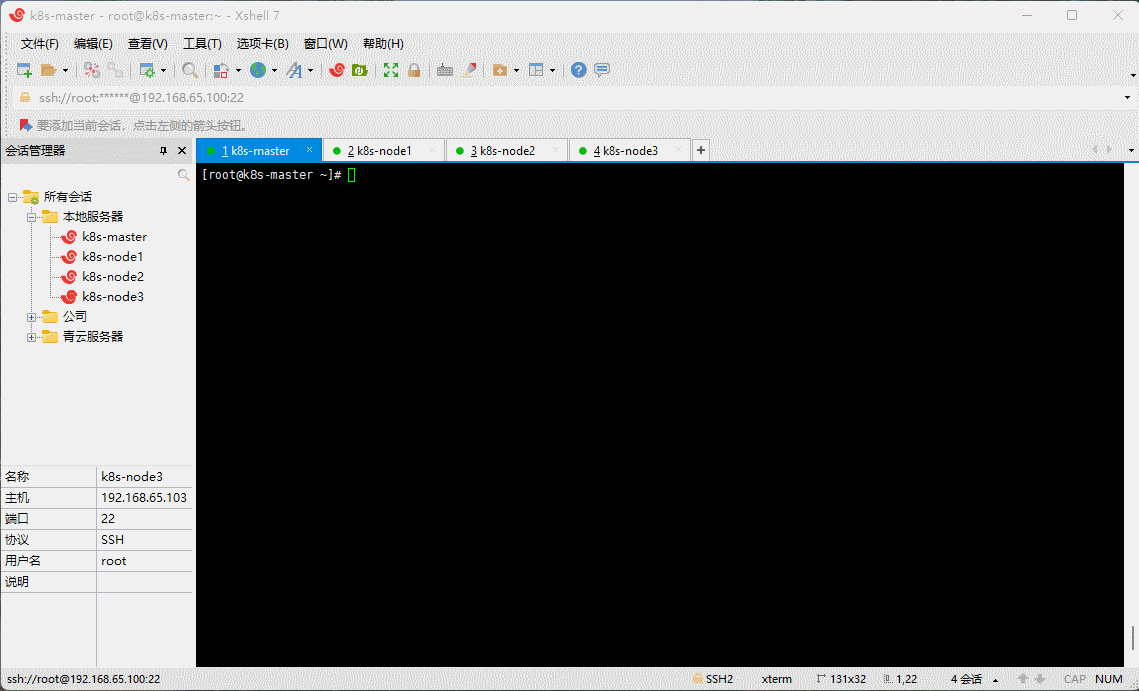
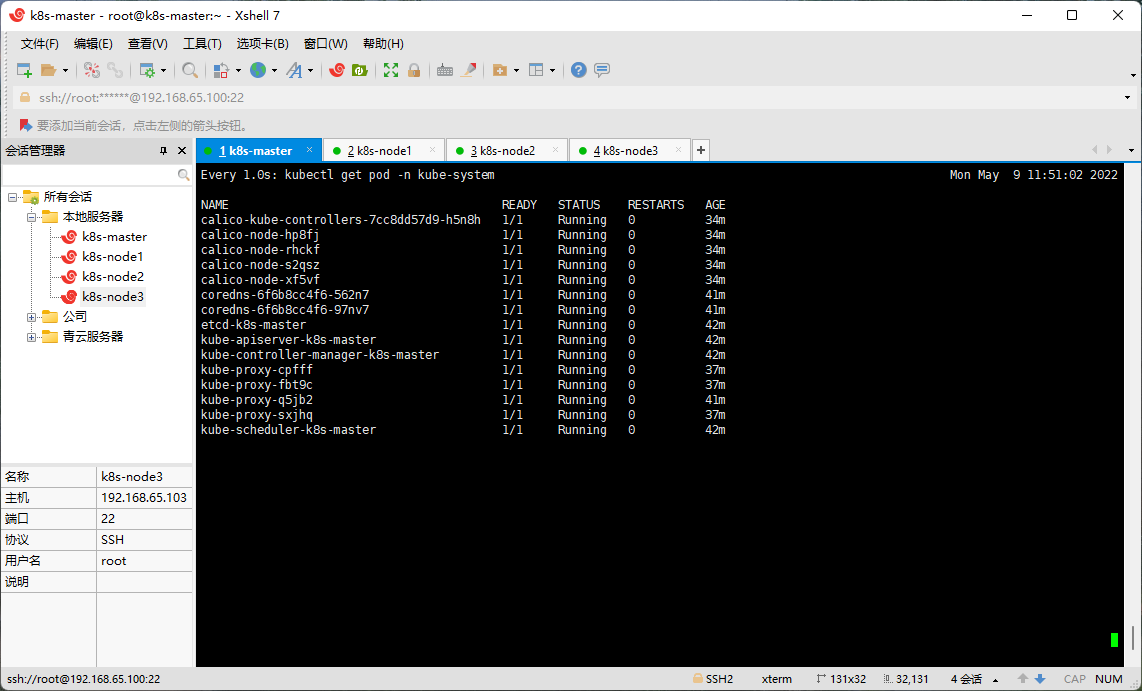
2.12 查看节点状态
- 在 Master(192.168.65.100)节点上查看节点状态:
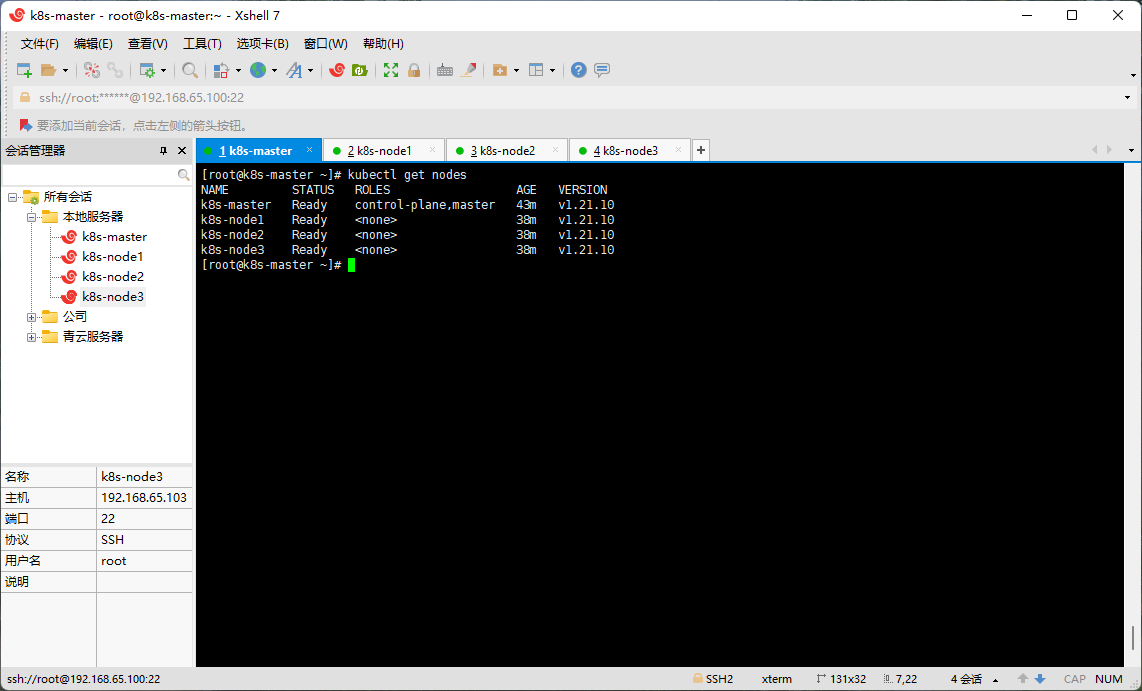
2.13 设置 kube-proxy 的 ipvs 模式
- 在 Master(192.168.65.100)节点设置 kube-proxy 的 ipvs 模式:
apiVersion: v1
data:
config.conf: |-
apiVersion: kubeproxy.config.k8s.io/v1alpha1
bindAddress: 0.0.0.0
bindAddressHardFail: false
clientConnection:
acceptContentTypes: ""
burst: 0
contentType: ""
kubeconfig: /var/lib/kube-proxy/kubeconfig.conf
qps: 0
clusterCIDR: 10.244.0.0/16
configSyncPeriod: 0s
conntrack:
maxPerCore: null
min: null
tcpCloseWaitTimeout: null
tcpEstablishedTimeout: null
detectLocalMode: ""
enableProfiling: false
healthzBindAddress: ""
hostnameOverride: ""
iptables:
masqueradeAll: false
masqueradeBit: null
minSyncPeriod: 0s
syncPeriod: 0s
ipvs:
excludeCIDRs: null
minSyncPeriod: 0s
scheduler: ""
strictARP: false
syncPeriod: 0s
tcpFinTimeout: 0s
tcpTimeout: 0s
udpTimeout: 0s
kind: KubeProxyConfiguration
metricsBindAddress: ""
mode: ""
nodePortAddresses: null
minSyncPeriod: 0s
syncPeriod: 0s
ipvs:
excludeCIDRs: null
minSyncPeriod: 0s
scheduler: ""
strictARP: false
syncPeriod: 0s
tcpFinTimeout: 0s
tcpTimeout: 0s
udpTimeout: 0s
kind: KubeProxyConfiguration
metricsBindAddress: ""
mode: "ipvs" # 修改此处
...
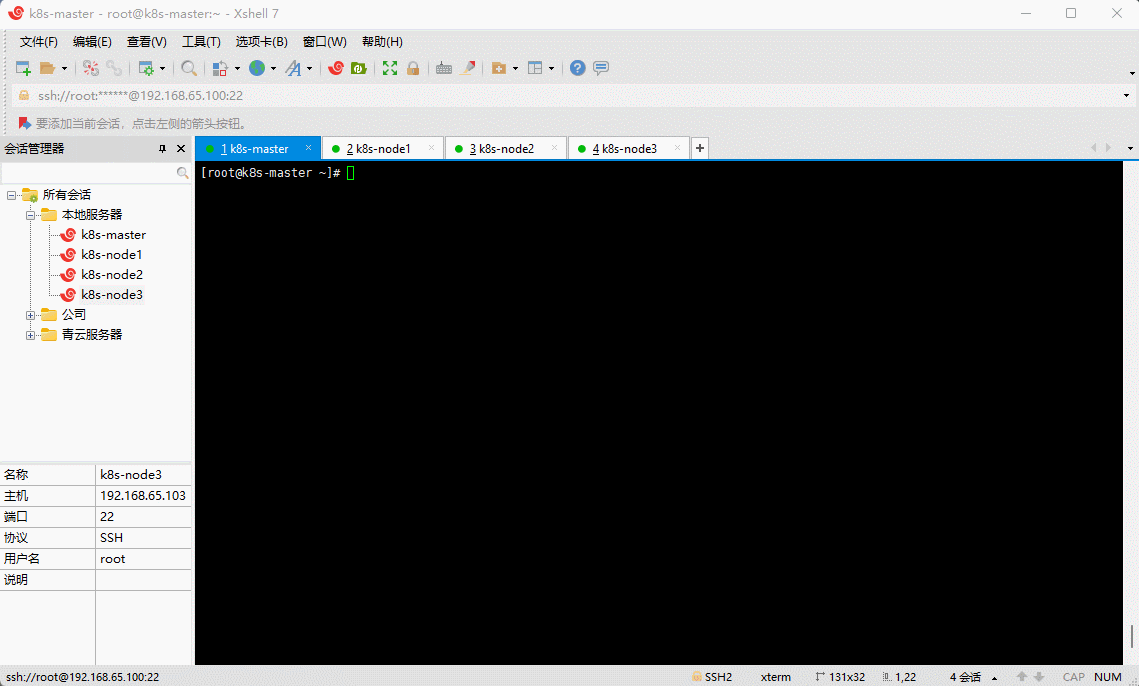
- 删除 kube-proxy ,让 Kubernetes 集群自动创建新的 kube-proxy :
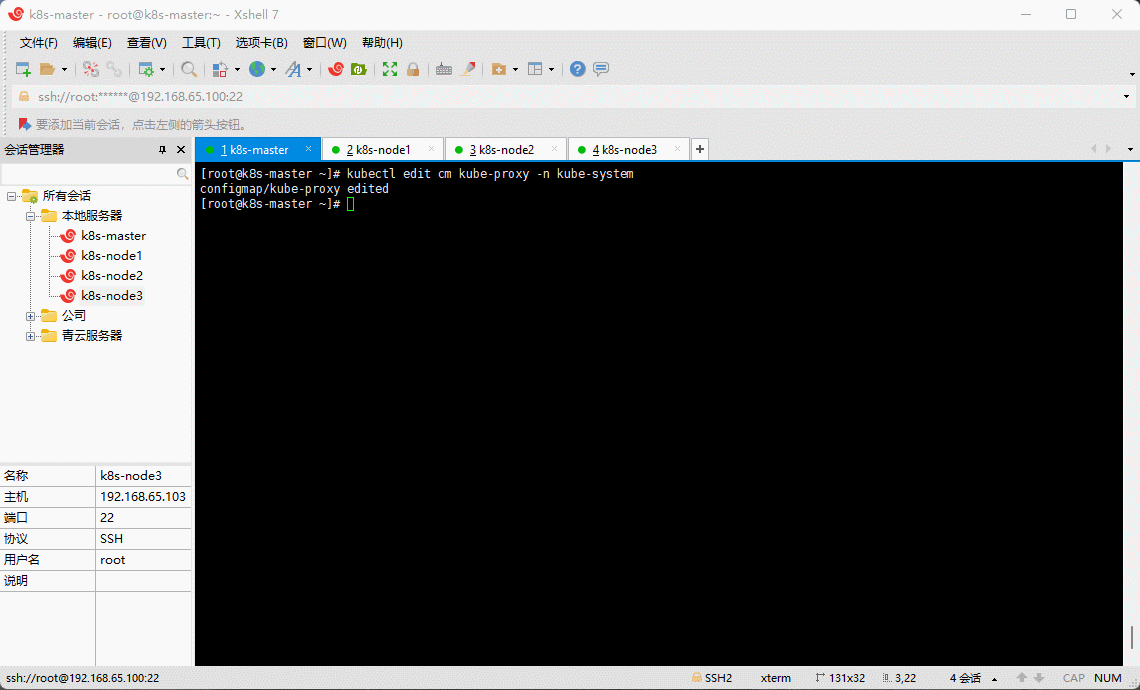
第三章:安装 KubeSphere 前置条件
3.1 安装 metrics-server(v 0.6.1)
- 在 Master(192.168.65.100)节点安装 metrics-server :
apiVersion: v1
kind: ServiceAccount
metadata:
labels:
k8s-app: metrics-server
name: metrics-server
namespace: kube-system
---
apiVersion: rbac.authorization.k8s.io/v1
kind: ClusterRole
metadata:
labels:
k8s-app: metrics-server
rbac.authorization.k8s.io/aggregate-to-admin: "true"
rbac.authorization.k8s.io/aggregate-to-edit: "true"
rbac.authorization.k8s.io/aggregate-to-view: "true"
name: system:aggregated-metrics-reader
rules:
- apiGroups:
- metrics.k8s.io
resources:
- pods
- nodes
verbs:
- get
- list
- watch
---
apiVersion: rbac.authorization.k8s.io/v1
kind: ClusterRole
metadata:
labels:
k8s-app: metrics-server
name: system:metrics-server
rules:
- apiGroups:
- ""
resources:
- nodes/metrics
verbs:
- get
- apiGroups:
- ""
resources:
- pods
- nodes
verbs:
- get
- list
- watch
---
apiVersion: rbac.authorization.k8s.io/v1
kind: RoleBinding
metadata:
labels:
k8s-app: metrics-server
name: metrics-server-auth-reader
namespace: kube-system
roleRef:
apiGroup: rbac.authorization.k8s.io
kind: Role
name: extension-apiserver-authentication-reader
subjects:
- kind: ServiceAccount
name: metrics-server
namespace: kube-system
---
apiVersion: rbac.authorization.k8s.io/v1
kind: ClusterRoleBinding
metadata:
labels:
k8s-app: metrics-server
name: metrics-server:system:auth-delegator
roleRef:
apiGroup: rbac.authorization.k8s.io
kind: ClusterRole
name: system:auth-delegator
subjects:
- kind: ServiceAccount
name: metrics-server
namespace: kube-system
---
apiVersion: rbac.authorization.k8s.io/v1
kind: ClusterRoleBinding
metadata:
labels:
k8s-app: metrics-server
name: system:metrics-server
roleRef:
apiGroup: rbac.authorization.k8s.io
kind: ClusterRole
name: system:metrics-server
subjects:
- kind: ServiceAccount
name: metrics-server
namespace: kube-system
---
apiVersion: v1
kind: Service
metadata:
labels:
k8s-app: metrics-server
name: metrics-server
namespace: kube-system
spec:
ports:
- name: https
port: 443
protocol: TCP
targetPort: https
selector:
k8s-app: metrics-server
---
apiVersion: apps/v1
kind: Deployment
metadata:
labels:
k8s-app: metrics-server
name: metrics-server
namespace: kube-system
spec:
selector:
matchLabels:
k8s-app: metrics-server
strategy:
rollingUpdate:
maxUnavailable: 0
template:
metadata:
labels:
k8s-app: metrics-server
spec:
containers:
- args:
- --cert-dir=/tmp
- --secure-port=4443
- --kubelet-preferred-address-types=InternalIP,ExternalIP,Hostname
- --kubelet-use-node-status-port
- --metric-resolution=15s
- --kubelet-insecure-tls # 使用非安全的协议
image: bitnami/metrics-server:0.6.1 # k8s.gcr.io/metrics-server/metrics-server:v0.6.1
imagePullPolicy: IfNotPresent
livenessProbe:
failureThreshold: 3
httpGet:
path: /livez
port: https
scheme: HTTPS
periodSeconds: 10
name: metrics-server
ports:
- containerPort: 4443
name: https
protocol: TCP
readinessProbe:
failureThreshold: 3
httpGet:
path: /readyz
port: https
scheme: HTTPS
initialDelaySeconds: 20
periodSeconds: 10
resources:
requests:
cpu: 100m
memory: 200Mi
securityContext:
allowPrivilegeEscalation: false
readOnlyRootFilesystem: true
runAsNonRoot: true
runAsUser: 1000
volumeMounts:
- mountPath: /tmp
name: tmp-dir
nodeSelector:
kubernetes.io/os: linux
priorityClassName: system-cluster-critical
serviceAccountName: metrics-server
volumes:
- emptyDir: {}
name: tmp-dir
---
apiVersion: apiregistration.k8s.io/v1
kind: APIService
metadata:
labels:
k8s-app: metrics-server
name: v1beta1.metrics.k8s.io
spec:
group: metrics.k8s.io
groupPriorityMinimum: 100
insecureSkipTLSVerify: true
service:
name: metrics-server
namespace: kube-system
version: v1beta1
versionPriority: 100
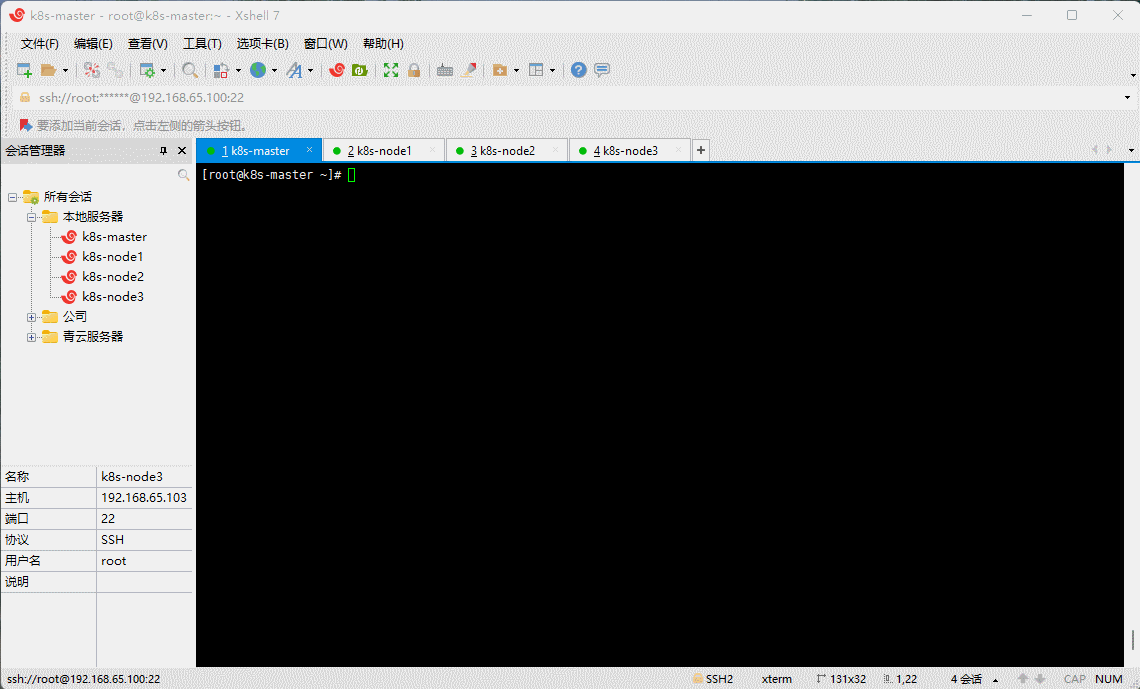
- 查看是否安装成功:
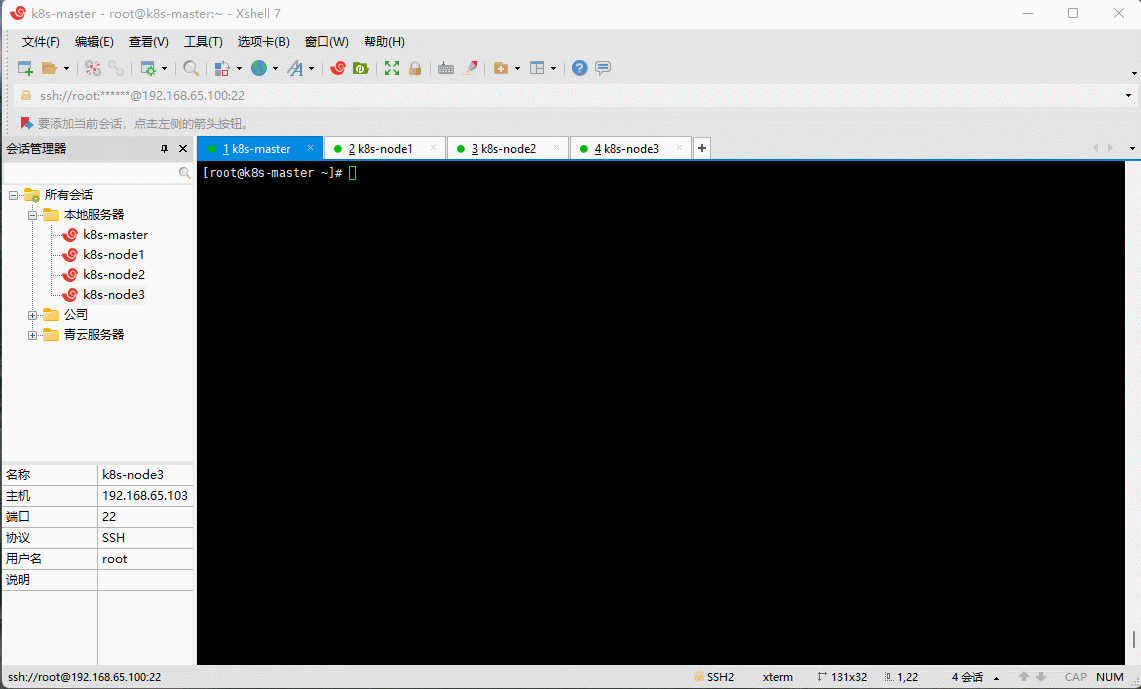
3.2 安装 GlusterFS 存储系统
注意:
- 不建议您在生产环境中使用 NFS 存储(尤其是在 Kubernetes 1.20 或以上版本),这可能会引起
failed to obtain lock和input/output error等问题,从而导致 PodCrashLoopBackOff。此外,部分应用不兼容 NFS,例如 Prometheus 等。- 开发和测试的时候,可以使用 NFS 存储。
3.2.1 VMware 添加空硬盘
- 在 VMware 中的 k8s-node1 和 k8s-node2 以及 K8s-node3 节点添加硬盘,本次只以 k8s-node1 为例,其余节点依次类推即可:
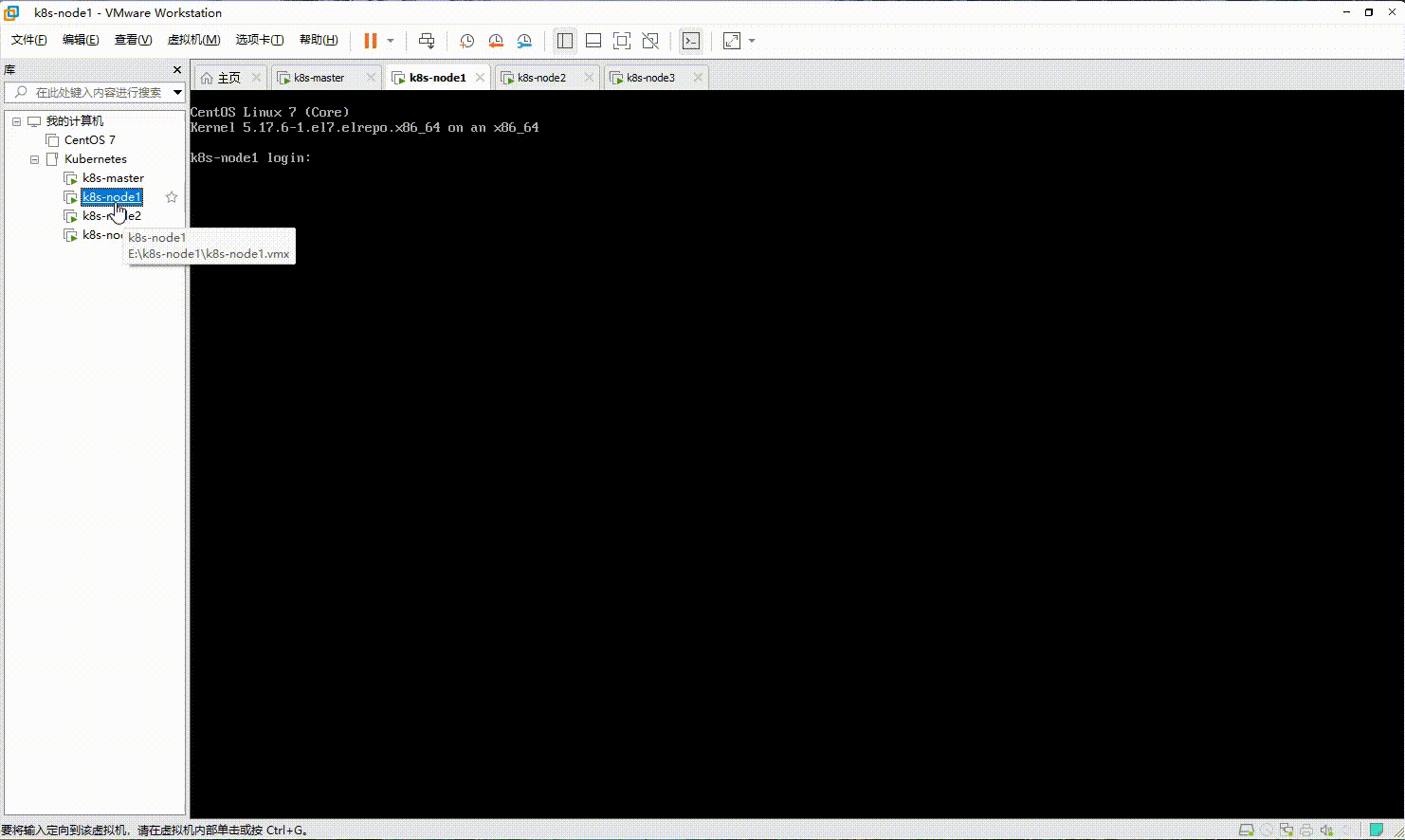
- 添加完毕之后,需要重启 k8s-node1 和 k8s-node2 以及 K8s-node3 节点,以便让这些机器能识别到新添加的硬盘:
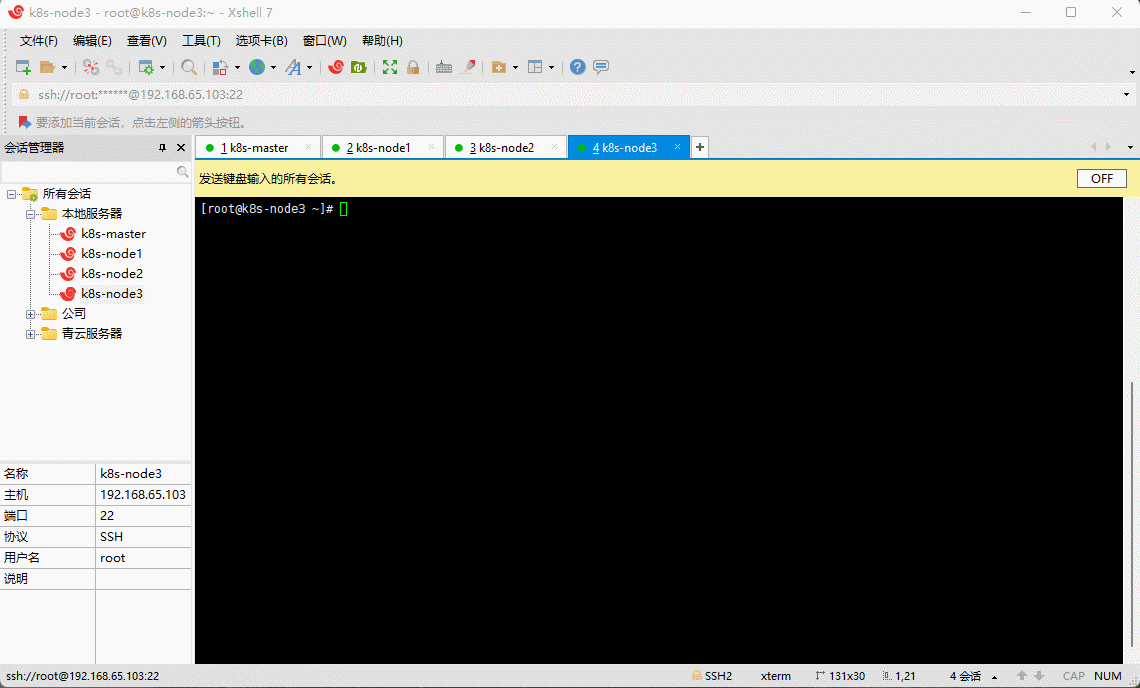
- 查看新添加的硬盘:

注意:云厂商需要磁盘清零,假设
lsblk -f命令查询的结果是 vdc ,那么就需要执行dd if=/dev/zero of=/dev/vdc bs=1M status=progress命令。
3.2.2 在所有 Node 节点机器安装 GlusterFS
- 在所有 Node 机器上配置 yum 源:
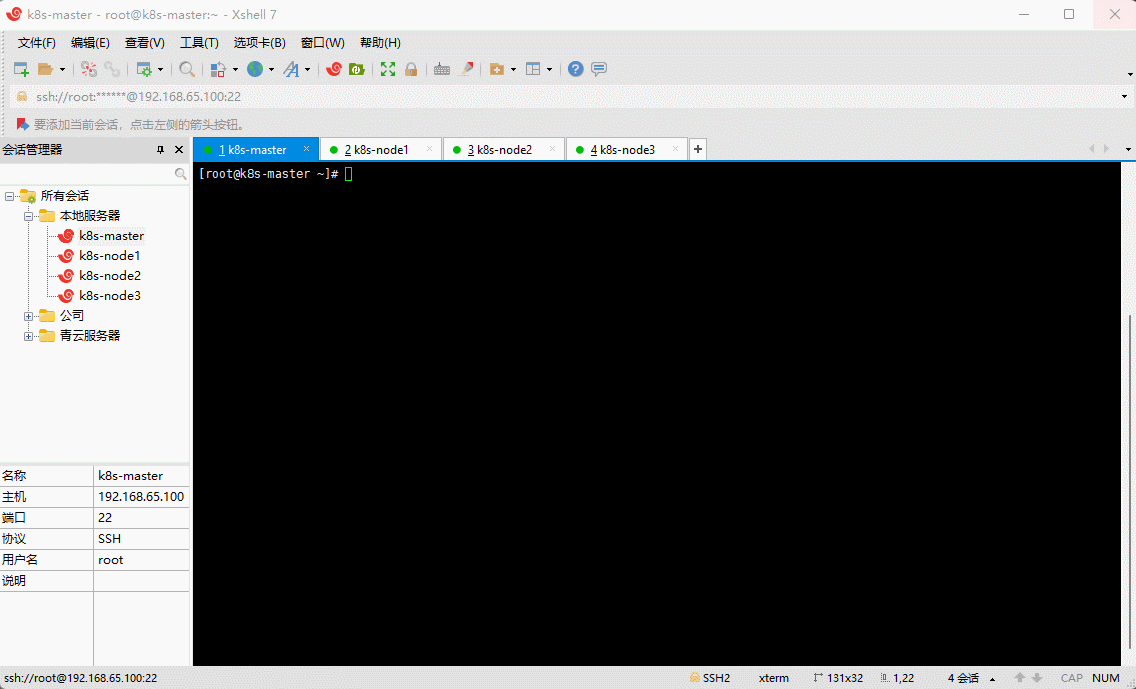
- 在所有 Node 机器安装 GlusterFS 服务器:

- 验证是否安装成功:
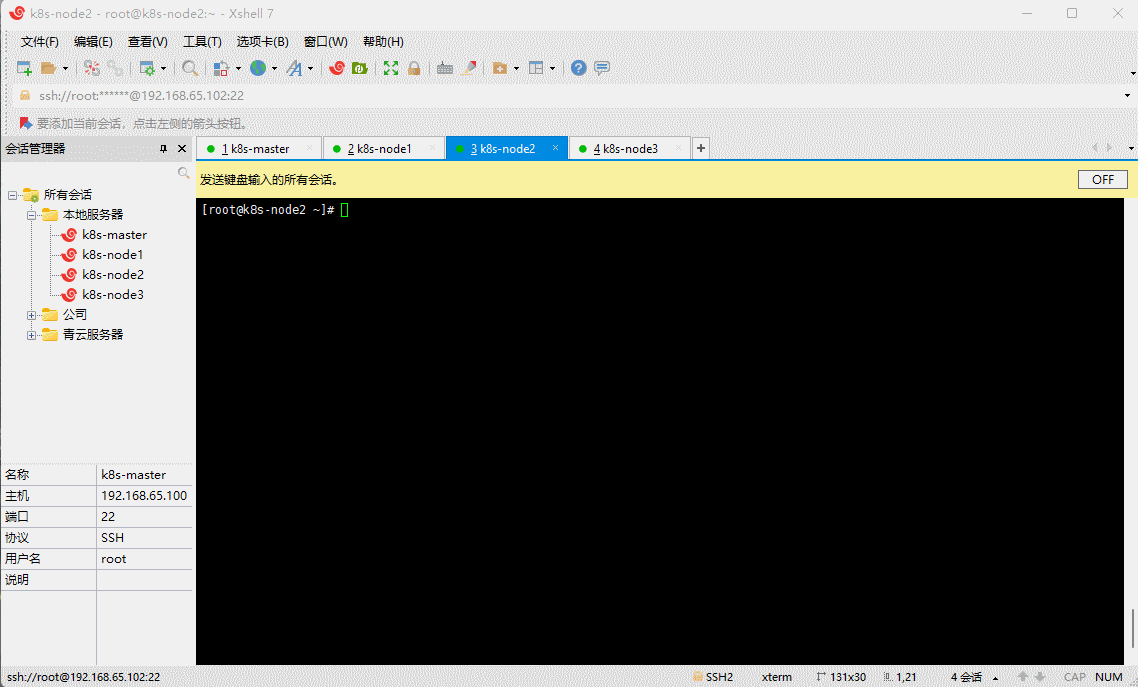
- 启动 glusterd 服务,并设置开机自启:

- 查看 glusterd 服务是否启动成功:
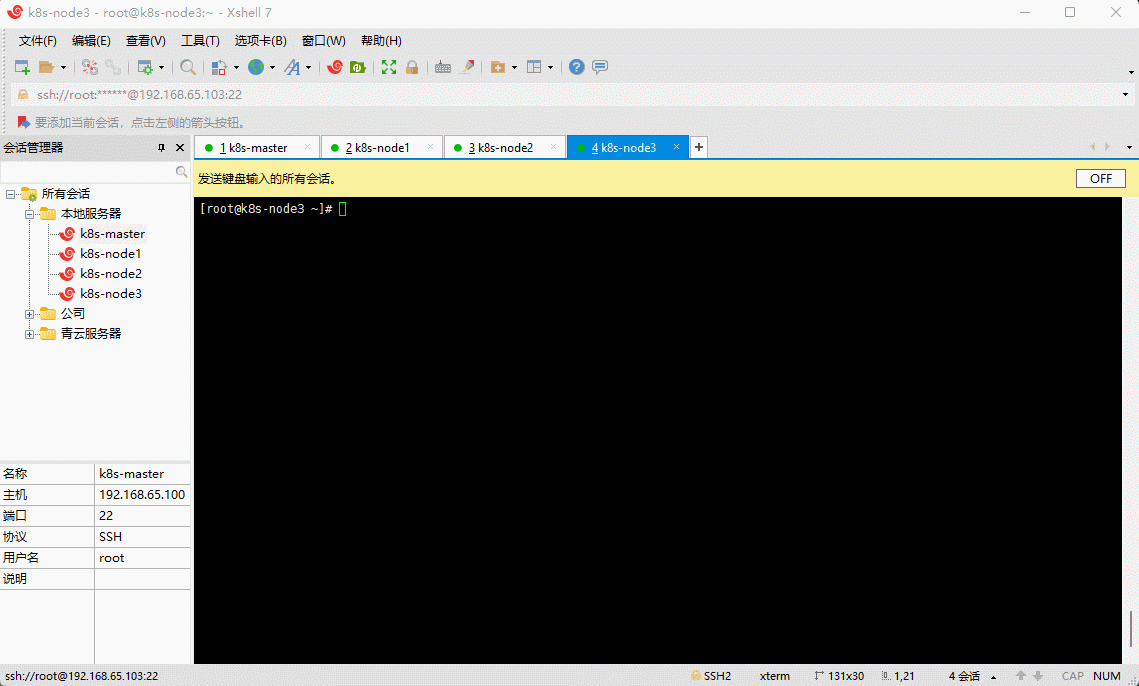
3.2.3 创建 GlusterFS 集群
- 在任意节点添加其他节点,组成 GlusterFS 集群,本次以 k8s-node1 为例:
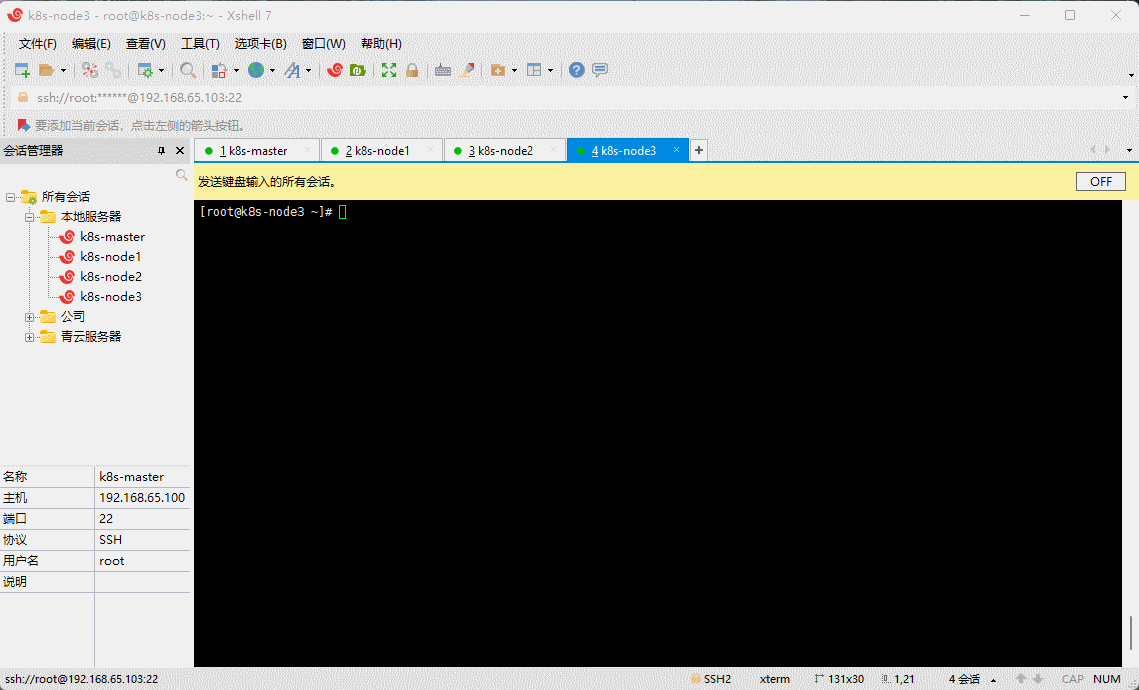
- 验证集群中的所有节点均已成功连接:

3.2.4 设置 Node 节点的免密登录
- 在 k8s-node1 节点执行如下命令:
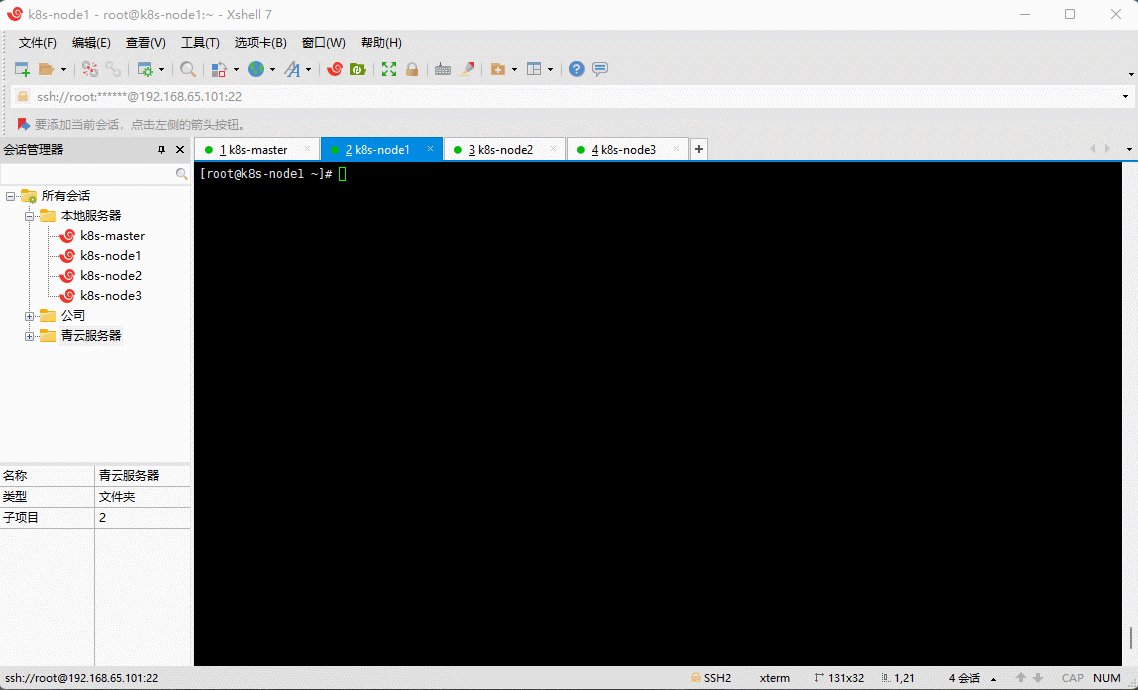
3.2.5 部署 Heketi
由于 GlusterFS 本身不提供 API 调用的方法,因此您可以安装 Heketi,通过用于 Kubernetes 调用的 RESTful API 来管理 GlusterFS 存储卷的生命周期。这样,您的 Kubernetes 集群就可以动态地配置 GlusterFS 存储卷。在此示例中将会安装 Heketi v7.0.0 。
- 在 k8s-node1 节点下载 Heketi (网络不行,点这里heketi.zip):
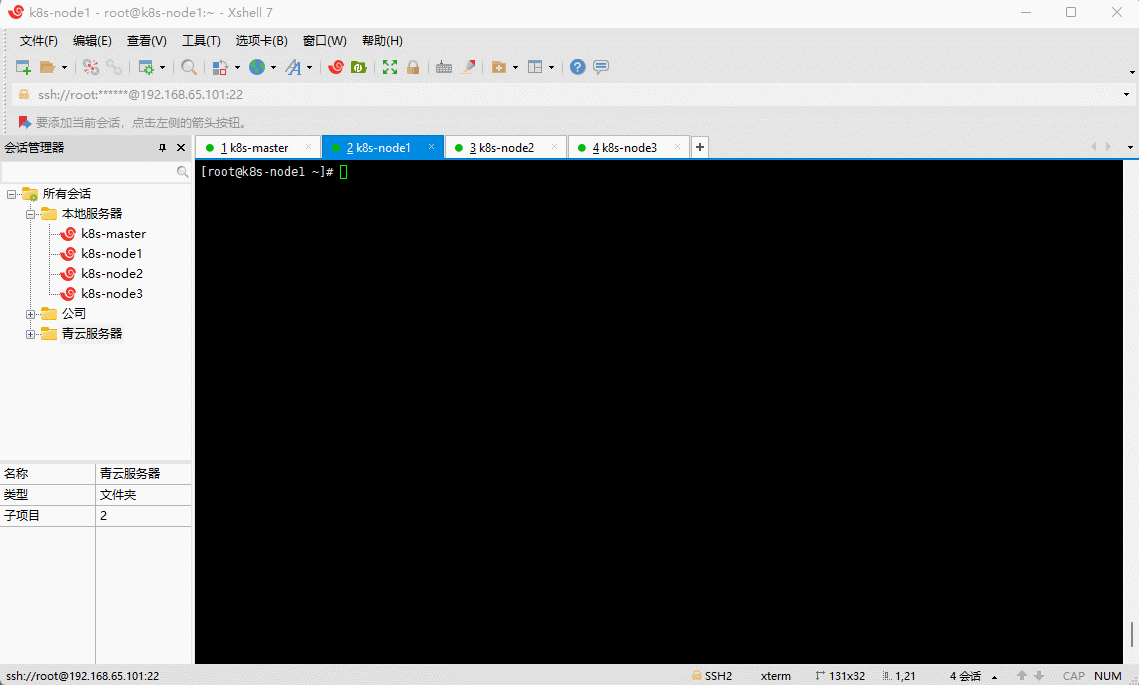
- 在 k8s-node1 节点解压 Heketi :
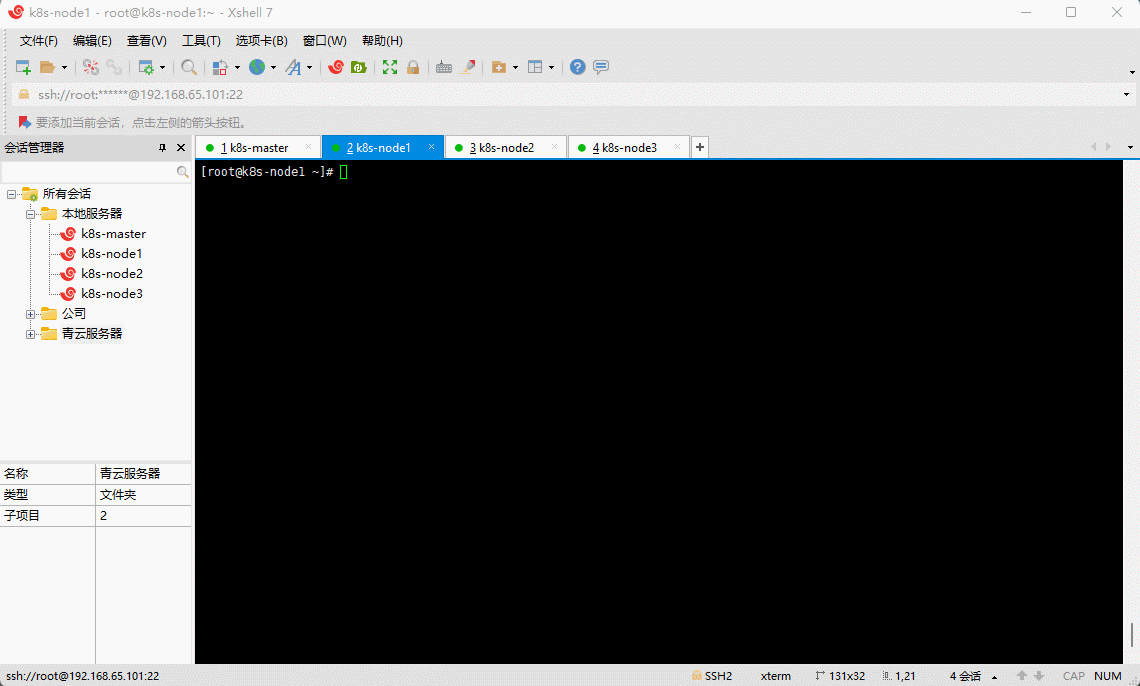
- 在 k8s-node1 节点创建 Heketi 服务文件:
[Unit]
Description=Heketi Server
[Service]
Type=simple
WorkingDirectory=/var/lib/heketi
ExecStart=/usr/bin/heketi --config=/etc/heketi/heketi.json
Restart=on-failure
StandardOutput=syslog
StandardError=syslog
[Install]
WantedBy=multi-user.target

- 在 k8s-node1 节点创建 Heketi 文件夹:
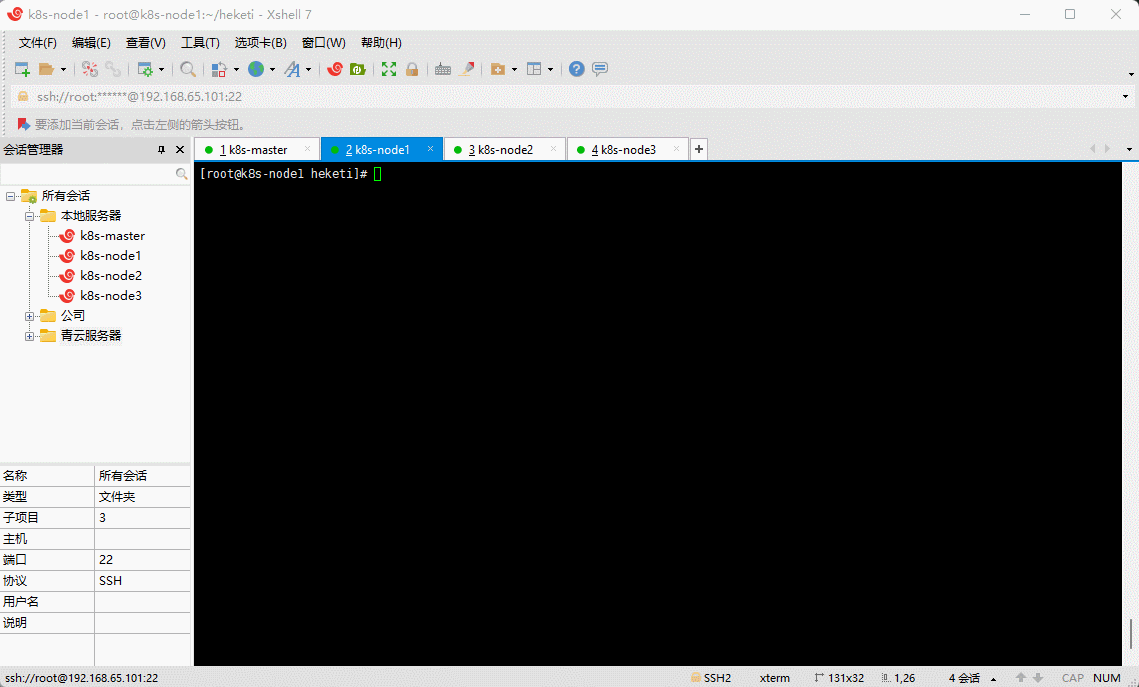
- 在 k8s-node1 节点创建 JSON 文件以配置 Heketi :
{
"_port_comment": "Heketi Server Port Number",
"port": "8080",
"_use_auth": "Enable JWT authorization. Please enable for deployment",
"use_auth": false,
"_jwt": "Private keys for access",
"jwt": {
"_admin": "Admin has access to all APIs",
"admin": {
"key": "123456"
},
"_user": "User only has access to /volumes endpoint",
"user": {
"key": "123456"
}
},
"_glusterfs_comment": "GlusterFS Configuration",
"glusterfs": {
"_executor_comment": [
"Execute plugin. Possible choices: mock, ssh",
"mock: This setting is used for testing and development.",
" It will not send commands to any node.",
"ssh: This setting will notify Heketi to ssh to the nodes.",
" It will need the values in sshexec to be configured.",
"kubernetes: Communicate with GlusterFS containers over",
" Kubernetes exec api."
],
"executor": "ssh",
"_sshexec_comment": "SSH username and private key file information",
"sshexec": {
"keyfile": "/root/.ssh/id_rsa",
"user": "root"
},
"_kubeexec_comment": "Kubernetes configuration",
"kubeexec": {
"host" :"https://kubernetes.host:8443",
"cert" : "/path/to/crt.file",
"insecure": false,
"user": "kubernetes username",
"password": "password for kubernetes user",
"namespace": "Kubernetes namespace",
"fstab": "Optional: Specify fstab file on node. Default is /etc/fstab"
},
"_db_comment": "Database file name",
"db": "/var/lib/heketi/heketi.db",
"brick_max_size_gb" : 1024,
"brick_min_size_gb" : 1,
"max_bricks_per_volume" : 33,
"_loglevel_comment": [
"Set log level. Choices are:",
" none, critical, error, warning, info, debug",
"Default is warning"
],
"loglevel" : "debug"
}
}
在安装 GlusterFS 作为 KubeSphere 集群的存储类型时,必须提供帐户
admin及其Secret值。
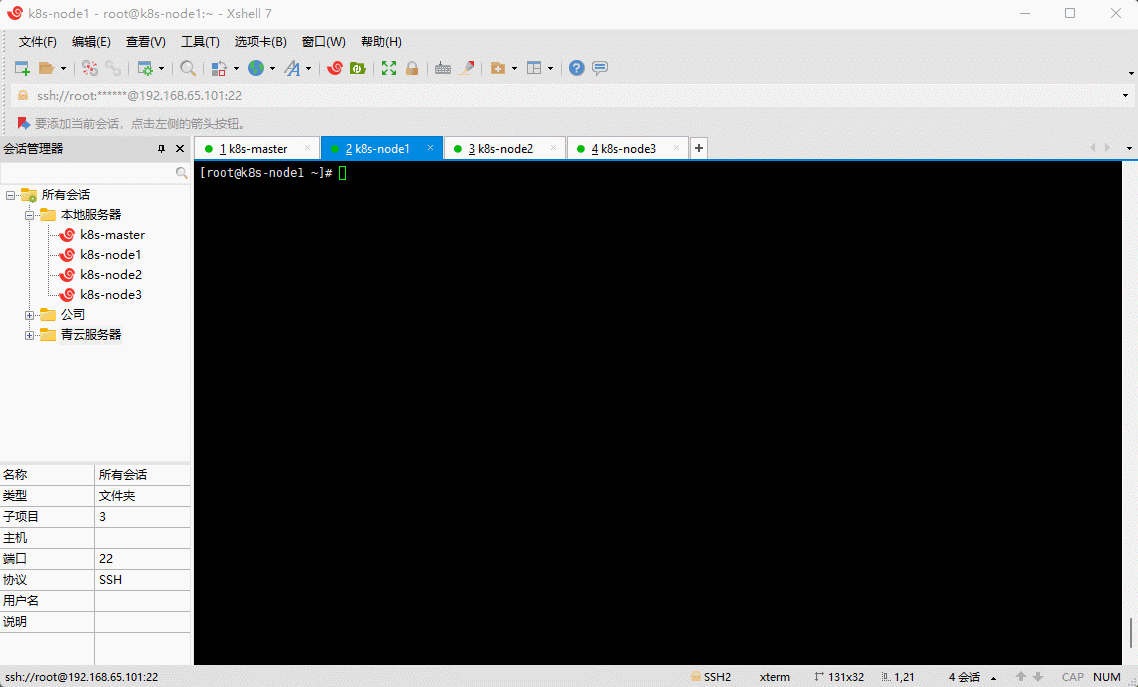
- 在 k8s-node1 节点启用 Heketi :
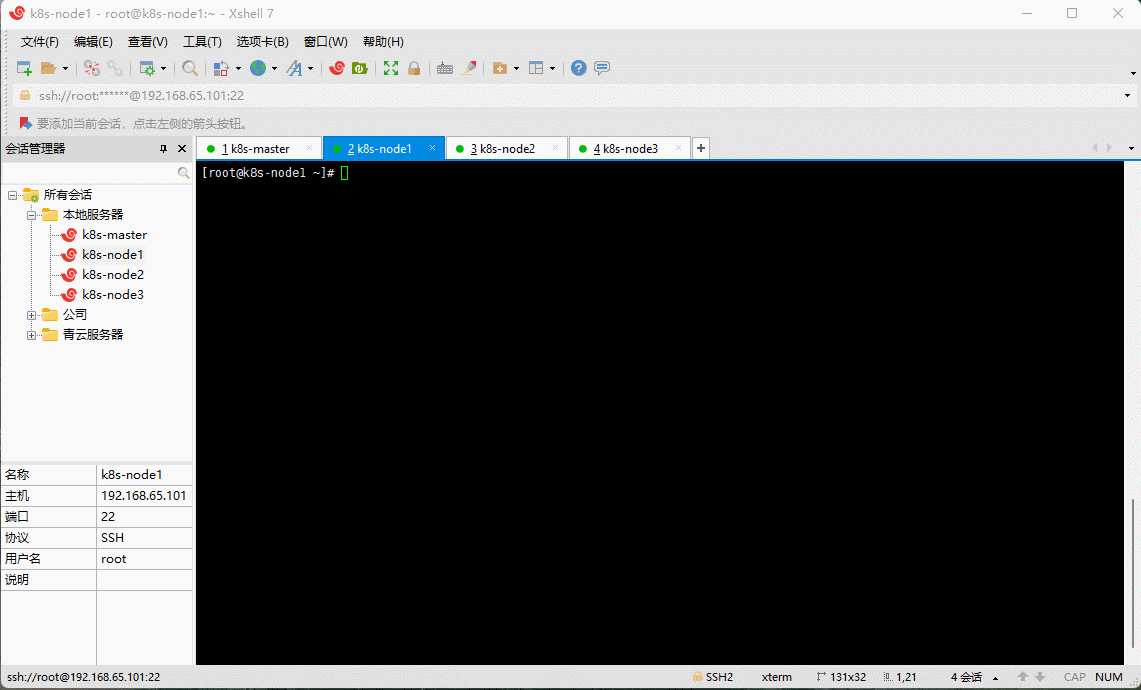
- 在 k8s-node1 节点检查 Heketi 的状态:

- 在 k8s-node1 节点设置 Heketi 开机自启:
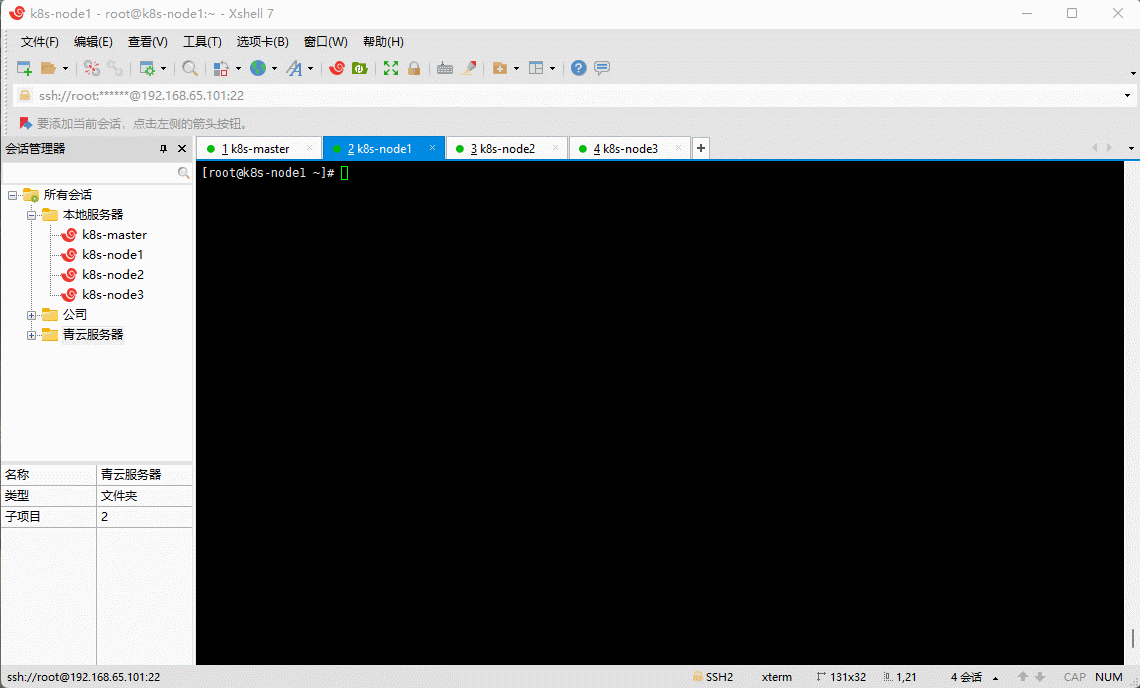
- 在 k8s-node1 节点为 Heketi 创建拓扑配置文件,该文件包含添加到 Heketi 的集群、节点和磁盘的信息。
{
"clusters": [
{
"nodes": [
{
"node": {
"hostnames": {
"manage": [
"192.168.65.101"
],
"storage": [
"192.168.65.101"
]
},
"zone": 1
},
"devices": [
"/dev/sdb"
]
},
{
"node": {
"hostnames": {
"manage": [
"192.168.65.102"
],
"storage": [
"192.168.65.102"
]
},
"zone": 1
},
"devices": [
"/dev/sdb"
]
},
{
"node": {
"hostnames": {
"manage": [
"192.168.65.103"
],
"storage": [
"192.168.65.103"
]
},
"zone": 1
},
"devices": [
"/dev/sdb"
]
}
]
}
]
}
- 请使用您自己的 IP 替换上述 IP 地址。
- 请在
devices一栏添加您自己的磁盘名称。
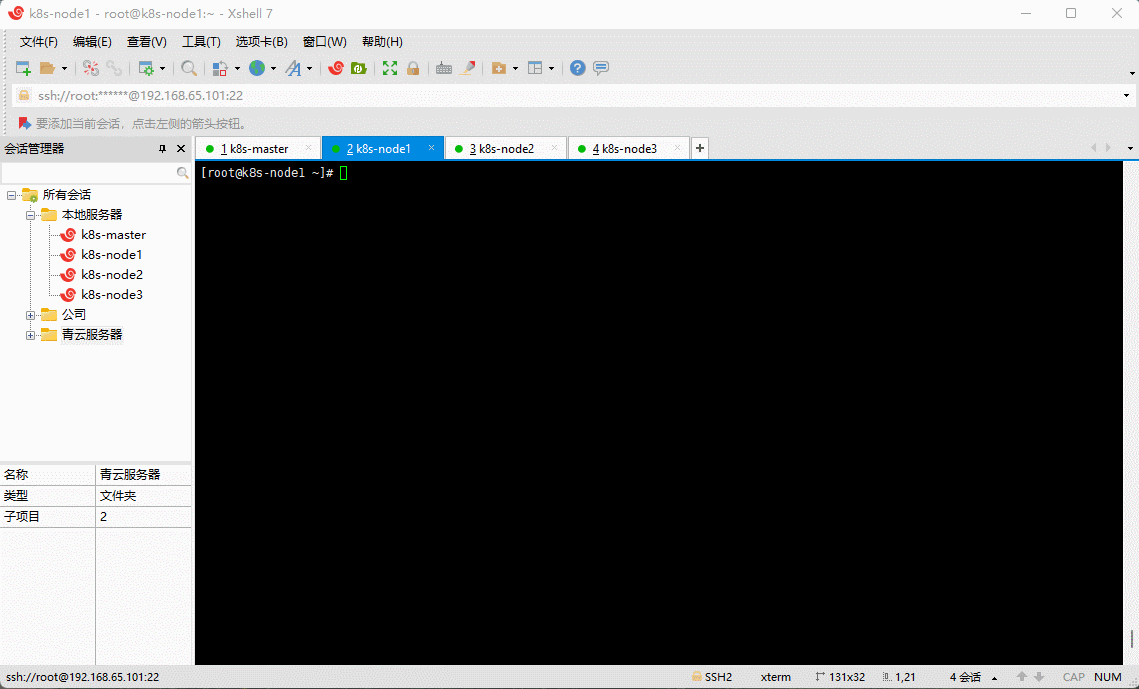
- 在 k8s-node1 节点加载 Heketi JSON 文件:
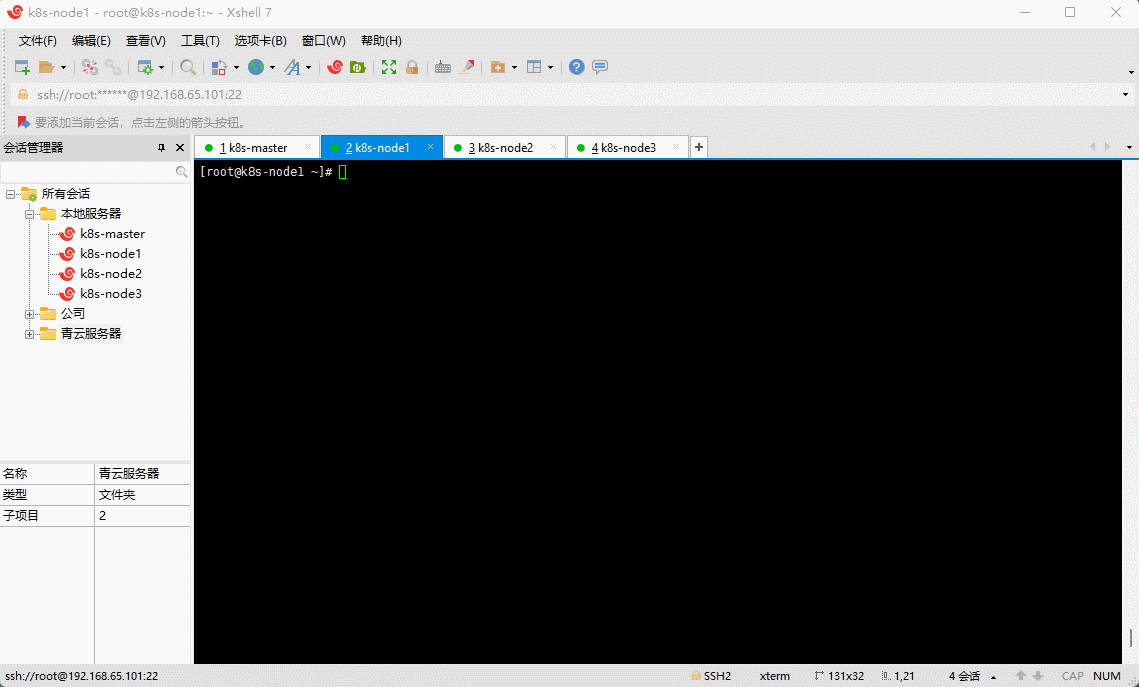
同时显示了集群 ID 和节点 ID。
- 在 k8s-node1 节点查看集群信息:
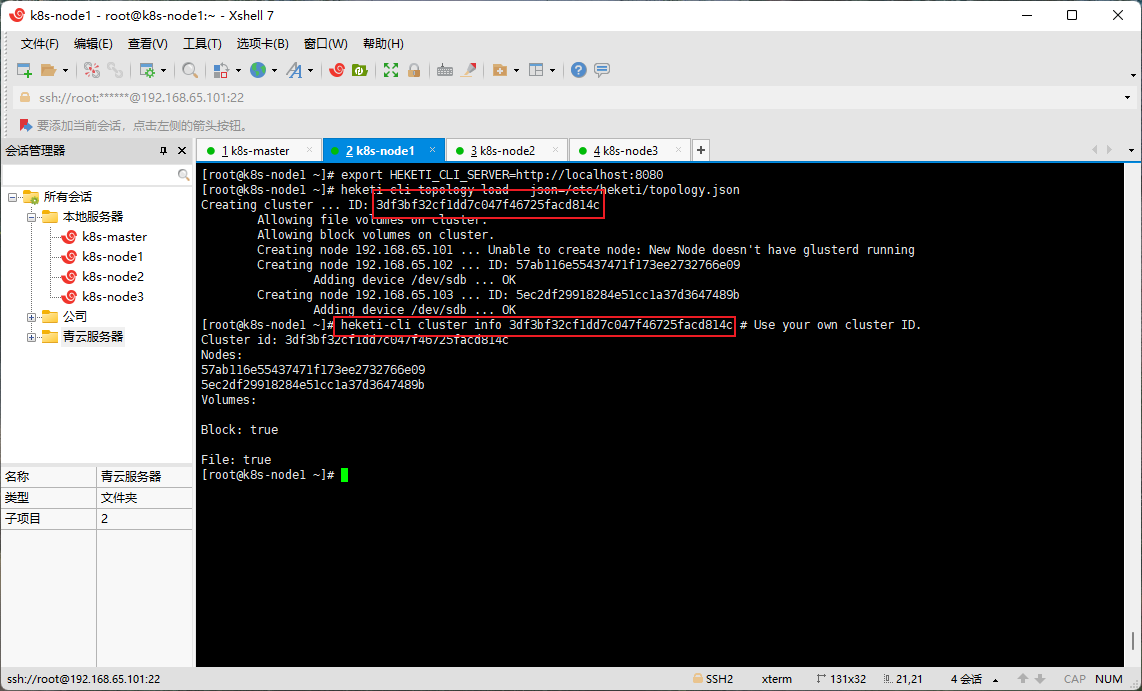
3.2.6 Kubernetes 使用 GlusterFS 创建 storageclass
- 在 k8s-master 节点创建 storageclass :
apiVersion: v1
kind: Secret
metadata:
name: heketi-secret
namespace: kube-system
type: kubernetes.io/glusterfs
data:
key: "MTIzNDU2" # 请替换为您自己的密钥。Base64 编码。 echo -n "123456" | base64
---
apiVersion: storage.k8s.io/v1
kind: StorageClass
metadata:
annotations:
storageclass.beta.kubernetes.io/is-default-class: "true"
storageclass.kubesphere.io/supported-access-modes: '["ReadWriteOnce","ReadOnlyMany","ReadWriteMany"]'
name: glusterfs
parameters:
clusterid: "3df3bf32cf1dd7c047f46725facd814c" #请替换为您自己的 GlusterFS 集群 ID。
gidMax: "50000"
gidMin: "40000"
restauthenabled: "true"
resturl: "http://192.168.65.101:8080" #Gluster REST 服务/Heketi 服务 URL 可按需供应 gluster 存储卷。请替换为您自己的 URL。
restuser: admin
secretName: heketi-secret
secretNamespace: kube-system
volumetype: "replicate:3" #请替换为您自己的存储卷类型。
provisioner: kubernetes.io/glusterfs
reclaimPolicy: Delete
volumeBindingMode: Immediate
allowVolumeExpansion: true
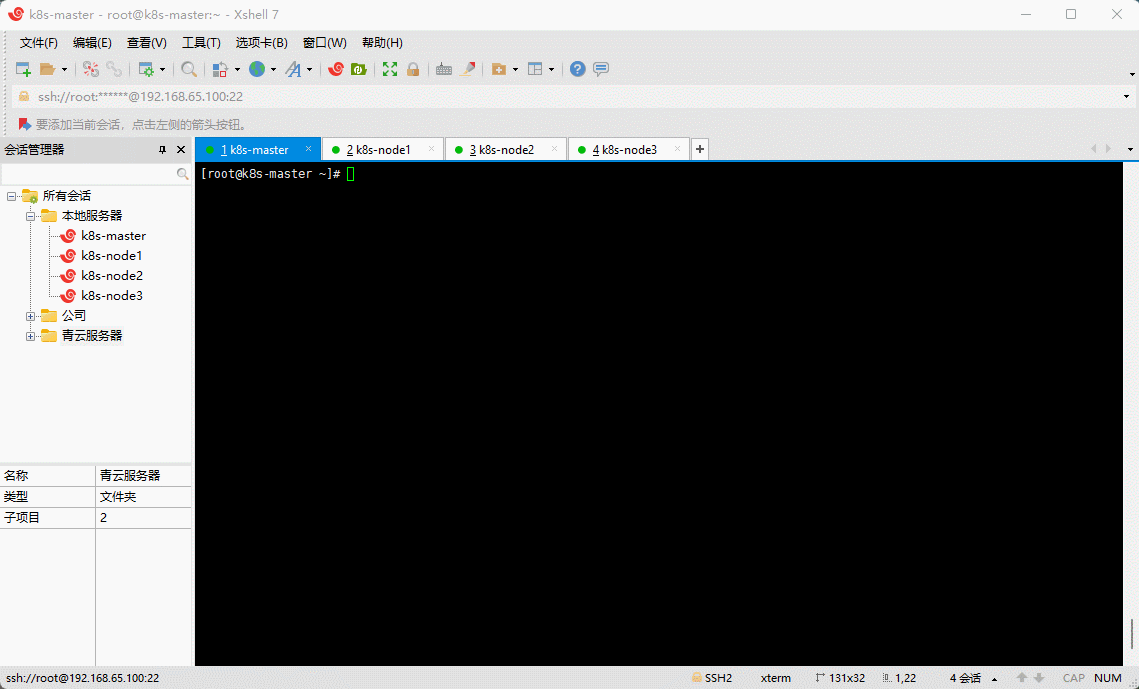
第四章:安装 KuberSphere(v3.2.1)
4.1 下载核心配置文件
- 在 k8s-master 节点下载核心配置文件(网速不行,请点这里kubesphere-installer.yamlcluster-configuration.yaml):
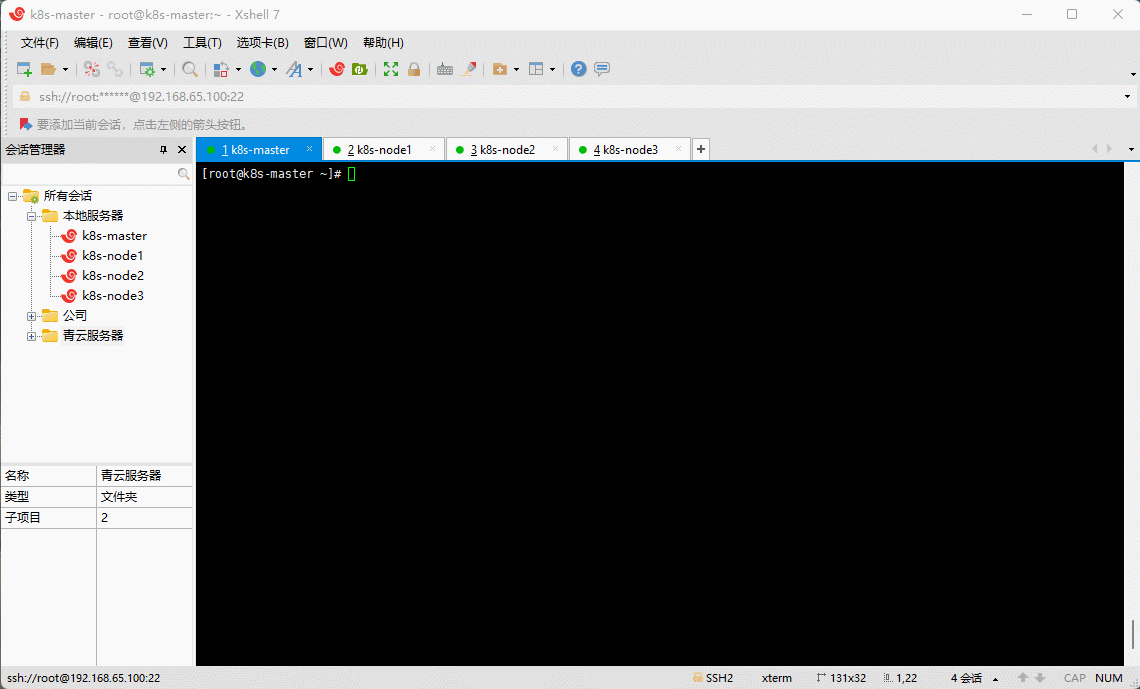
4.2 修改 cluster-configuration
- 在 k8s-master 节点修改 cluster-configuration.yaml 文件,指定我们需要开启的功能:
---
apiVersion: installer.kubesphere.io/v1alpha1
kind: ClusterConfiguration
metadata:
name: ks-installer
namespace: kubesphere-system
labels:
version: v3.2.1
spec:
persistence:
storageClass: "" # If there is no default StorageClass in your cluster, you need to specify an existing StorageClass here.
authentication:
jwtSecret: "" # Keep the jwtSecret consistent with the Host Cluster. Retrieve the jwtSecret by executing "kubectl -n kubesphere-system get cm kubesphere-config -o yaml | grep -v "apiVersion" | grep jwtSecret" on the Host Cluster.
local_registry: "" # Add your private registry address if it is needed.
# dev_tag: "" # Add your kubesphere image tag you want to install, by default it's same as ks-install release version.
etcd:
monitoring: true # Enable or disable etcd monitoring dashboard installation. You have to create a Secret for etcd before you enable it.
endpointIps: localhost # etcd cluster EndpointIps. It can be a bunch of IPs here.
port: 2379 # etcd port.
tlsEnable: true
common:
core:
console:
enableMultiLogin: true # Enable or disable simultaneous logins. It allows different users to log in with the same account at the same time.
port: 30880
type: NodePort
# apiserver: # Enlarge the apiserver and controller manager's resource requests and limits for the large cluster
# resources: {}
# controllerManager:
# resources: {}
redis:
enabled: true
volumeSize: 2Gi # Redis PVC size.
openldap:
enabled: true
volumeSize: 2Gi # openldap PVC size.
minio:
volumeSize: 20Gi # Minio PVC size.
monitoring:
# type: external # Whether to specify the external prometheus stack, and need to modify the endpoint at the next line.
endpoint: http://prometheus-operated.kubesphere-monitoring-system.svc:9090 # Prometheus endpoint to get metrics data.
GPUMonitoring: # Enable or disable the GPU-related metrics. If you enable this switch but have no GPU resources, Kubesphere will set it to zero.
enabled: false
gpu: # Install GPUKinds. The default GPU kind is nvidia.com/gpu. Other GPU kinds can be added here according to your needs.
kinds:
- resourceName: "nvidia.com/gpu"
resourceType: "GPU"
default: true
es: # Storage backend for logging, events and auditing.
# master:
# volumeSize: 4Gi # The volume size of Elasticsearch master nodes.
# replicas: 1 # The total number of master nodes. Even numbers are not allowed.
# resources: {}
# data:
# volumeSize: 20Gi # The volume size of Elasticsearch data nodes.
# replicas: 1 # The total number of data nodes.
# resources: {}
logMaxAge: 7 # Log retention time in built-in Elasticsearch. It is 7 days by default.
elkPrefix: logstash # The string making up index names. The index name will be formatted as ks-<elk_prefix>-log.
basicAuth:
enabled: false
username: ""
password: ""
externalElasticsearchUrl: ""
externalElasticsearchPort: ""
alerting: # (CPU: 0.1 Core, Memory: 100 MiB) It enables users to customize alerting policies to send messages to receivers in time with different time intervals and alerting levels to choose from.
enabled: true # Enable or disable the KubeSphere Alerting System.
# thanosruler:
# replicas: 1
# resources: {}
auditing: # Provide a security-relevant chronological set of records,recording the sequence of activities happening on the platform, initiated by different tenants.
enabled: true # Enable or disable the KubeSphere Auditing Log System.
# operator:
# resources: {}
# webhook:
# resources: {}
devops: # (CPU: 0.47 Core, Memory: 8.6 G) Provide an out-of-the-box CI/CD system based on Jenkins, and automated workflow tools including Source-to-Image & Binary-to-Image.
enabled: true # Enable or disable the KubeSphere DevOps System.
# resources: {}
jenkinsMemoryLim: 2Gi # Jenkins memory limit.
jenkinsMemoryReq: 1500Mi # Jenkins memory request.
jenkinsVolumeSize: 8Gi # Jenkins volume size.
jenkinsJavaOpts_Xms: 512m # The following three fields are JVM parameters.
jenkinsJavaOpts_Xmx: 512m
jenkinsJavaOpts_MaxRAM: 2g
events: # Provide a graphical web console for Kubernetes Events exporting, filtering and alerting in multi-tenant Kubernetes clusters.
enabled: true # Enable or disable the KubeSphere Events System.
# operator:
# resources: {}
# exporter:
# resources: {}
# ruler:
# enabled: true
# replicas: 2
# resources: {}
logging: # (CPU: 57 m, Memory: 2.76 G) Flexible logging functions are provided for log query, collection and management in a unified console. Additional log collectors can be added, such as Elasticsearch, Kafka and Fluentd.
enabled: true # Enable or disable the KubeSphere Logging System.
containerruntime: docker
logsidecar:
enabled: true
replicas: 2
# resources: {}
metrics_server: # (CPU: 56 m, Memory: 44.35 MiB) It enables HPA (Horizontal Pod Autoscaler).
enabled: false # Enable or disable metrics-server.
monitoring:
storageClass: "" # If there is an independent StorageClass you need for Prometheus, you can specify it here. The default StorageClass is used by default.
# kube_rbac_proxy:
# resources: {}
# kube_state_metrics:
# resources: {}
# prometheus:
# replicas: 1 # Prometheus replicas are responsible for monitoring different segments of data source and providing high availability.
# volumeSize: 20Gi # Prometheus PVC size.
# resources: {}
# operator:
# resources: {}
# adapter:
# resources: {}
# node_exporter:
# resources: {}
# alertmanager:
# replicas: 1 # AlertManager Replicas.
# resources: {}
# notification_manager:
# resources: {}
# operator:
# resources: {}
# proxy:
# resources: {}
gpu: # GPU monitoring-related plug-in installation.
nvidia_dcgm_exporter: # Ensure that gpu resources on your hosts can be used normally, otherwise this plug-in will not work properly.
enabled: false # Check whether the labels on the GPU hosts contain "nvidia.com/gpu.present=true" to ensure that the DCGM pod is scheduled to these nodes.
# resources: {}
multicluster:
clusterRole: none # host | member | none # You can install a solo cluster, or specify it as the Host or Member Cluster.
network:
networkpolicy: # Network policies allow network isolation within the same cluster, which means firewalls can be set up between certain instances (Pods).
# Make sure that the CNI network plugin used by the cluster supports NetworkPolicy. There are a number of CNI network plugins that support NetworkPolicy, including Calico, Cilium, Kube-router, Romana and Weave Net.
enabled: true # Enable or disable network policies.
ippool: # Use Pod IP Pools to manage the Pod network address space. Pods to be created can be assigned IP addresses from a Pod IP Pool.
type: none # Specify "calico" for this field if Calico is used as your CNI plugin. "none" means that Pod IP Pools are disabled.
topology: # Use Service Topology to view Service-to-Service communication based on Weave Scope.
type: none # Specify "weave-scope" for this field to enable Service Topology. "none" means that Service Topology is disabled.
openpitrix: # An App Store that is accessible to all platform tenants. You can use it to manage apps across their entire lifecycle.
store:
enabled: true # Enable or disable the KubeSphere App Store.
servicemesh: # (0.3 Core, 300 MiB) Provide fine-grained traffic management, observability and tracing, and visualized traffic topology.
enabled: true # Base component (pilot). Enable or disable KubeSphere Service Mesh (Istio-based).
kubeedge: # Add edge nodes to your cluster and deploy workloads on edge nodes.
enabled: true # Enable or disable KubeEdge.
cloudCore:
nodeSelector: {"node-role.kubernetes.io/worker": ""}
tolerations: []
cloudhubPort: "10000"
cloudhubQuicPort: "10001"
cloudhubHttpsPort: "10002"
cloudstreamPort: "10003"
tunnelPort: "10004"
cloudHub:
advertiseAddress: # At least a public IP address or an IP address which can be accessed by edge nodes must be provided.
- "" # Note that once KubeEdge is enabled, CloudCore will malfunction if the address is not provided.
nodeLimit: "100"
service:
cloudhubNodePort: "30000"
cloudhubQuicNodePort: "30001"
cloudhubHttpsNodePort: "30002"
cloudstreamNodePort: "30003"
tunnelNodePort: "30004"
edgeWatcher:
nodeSelector: {"node-role.kubernetes.io/worker": ""}
tolerations: []
edgeWatcherAgent:
nodeSelector: {"node-role.kubernetes.io/worker": ""}
tolerations: []
4.3 执行安装
- 在 k8s-master 节点执行安装:

- 在 k8s-master 节点查看安装进度:
kubectl logs -n kubesphere-system $(kubectl get pod -n kubesphere-system -l app=ks-install -o jsonpath='{.items[0].metadata.name}') -f
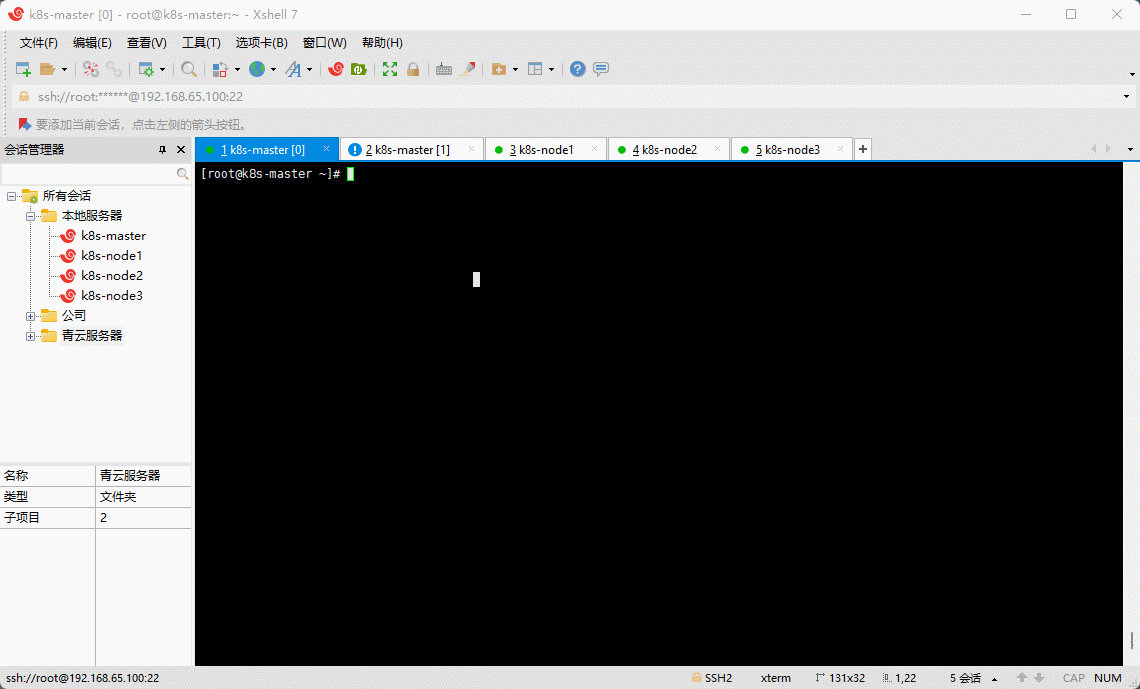
4.4 解决 etcd 监控证书找不到的问题
- 在 k8s-master 节点解决 etcd 监控证书找不到的问题:
kubectl -n kubesphere-monitoring-system create secret generic kube-etcd-client-certs --from-file=etcd-client-ca.crt=/etc/kubernetes/pki/etcd/ca.crt --from-file=etcd-client.crt=/etc/kubernetes/pki/apiserver-etcd-client.crt --from-file=etcd-client.key=/etc/kubernetes/pki/apiserver-etcd-client.key
更新: 2023-04-01 06:17:22
原文: https://www.yuque.com/fairy-era/yg511q/renxuz